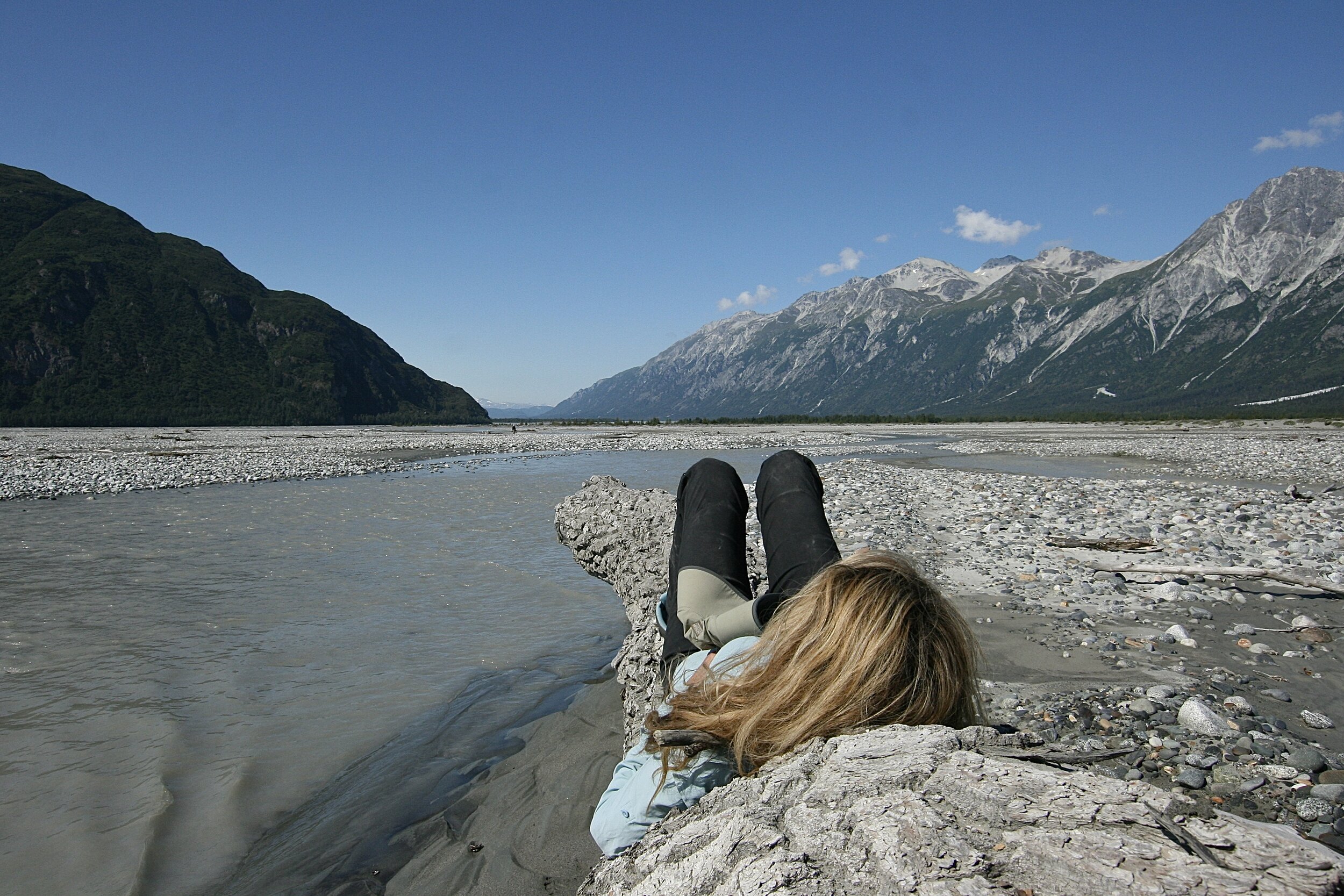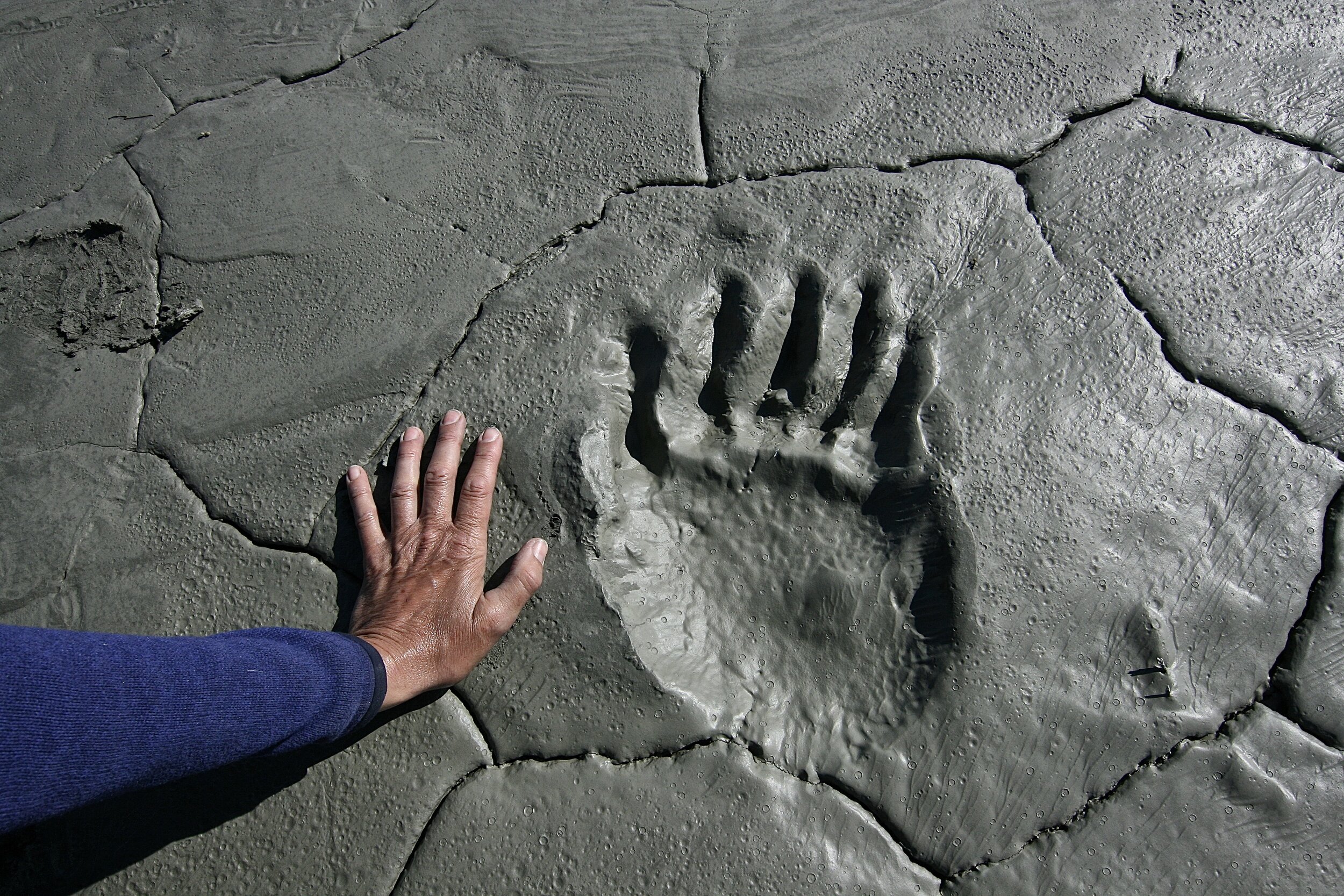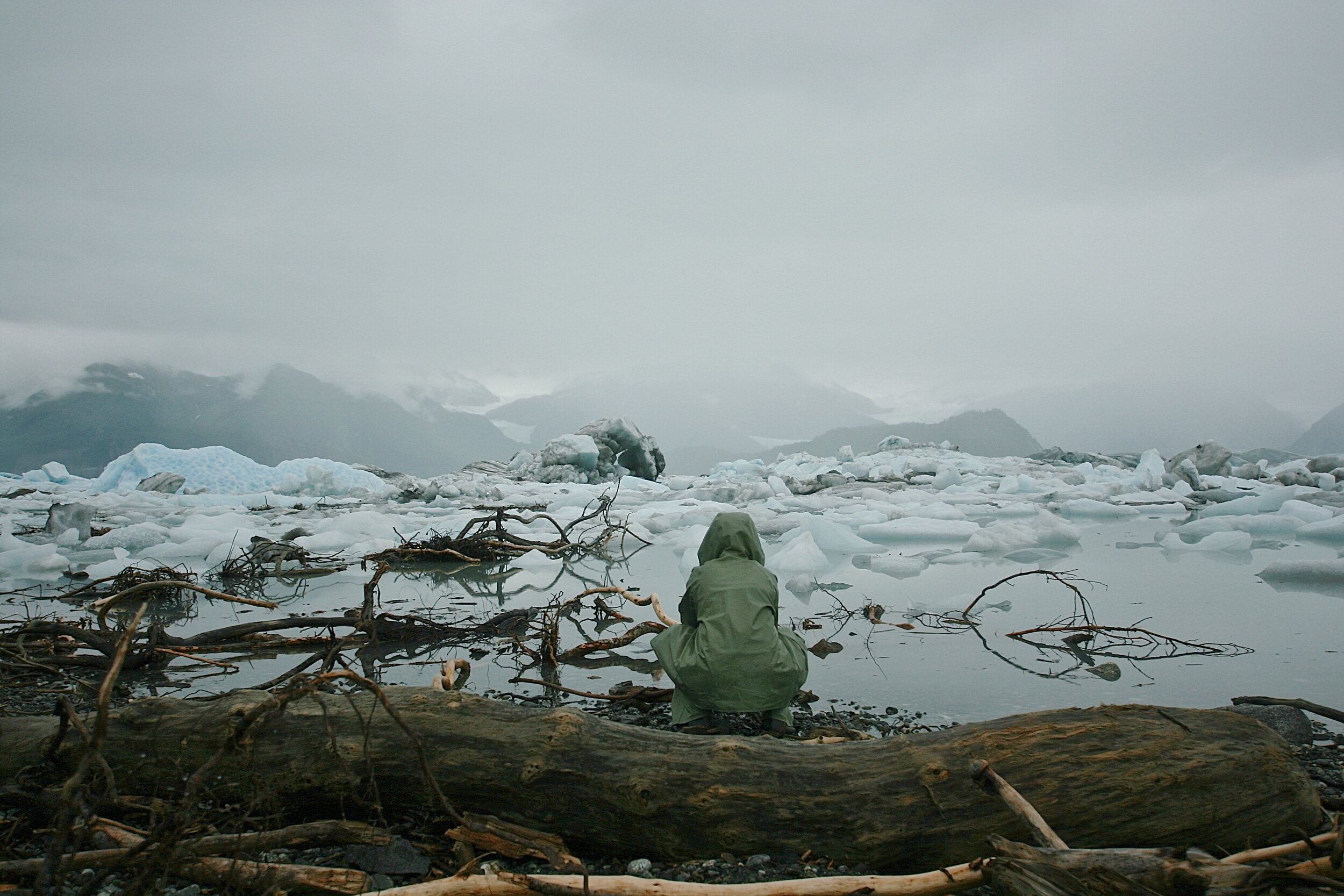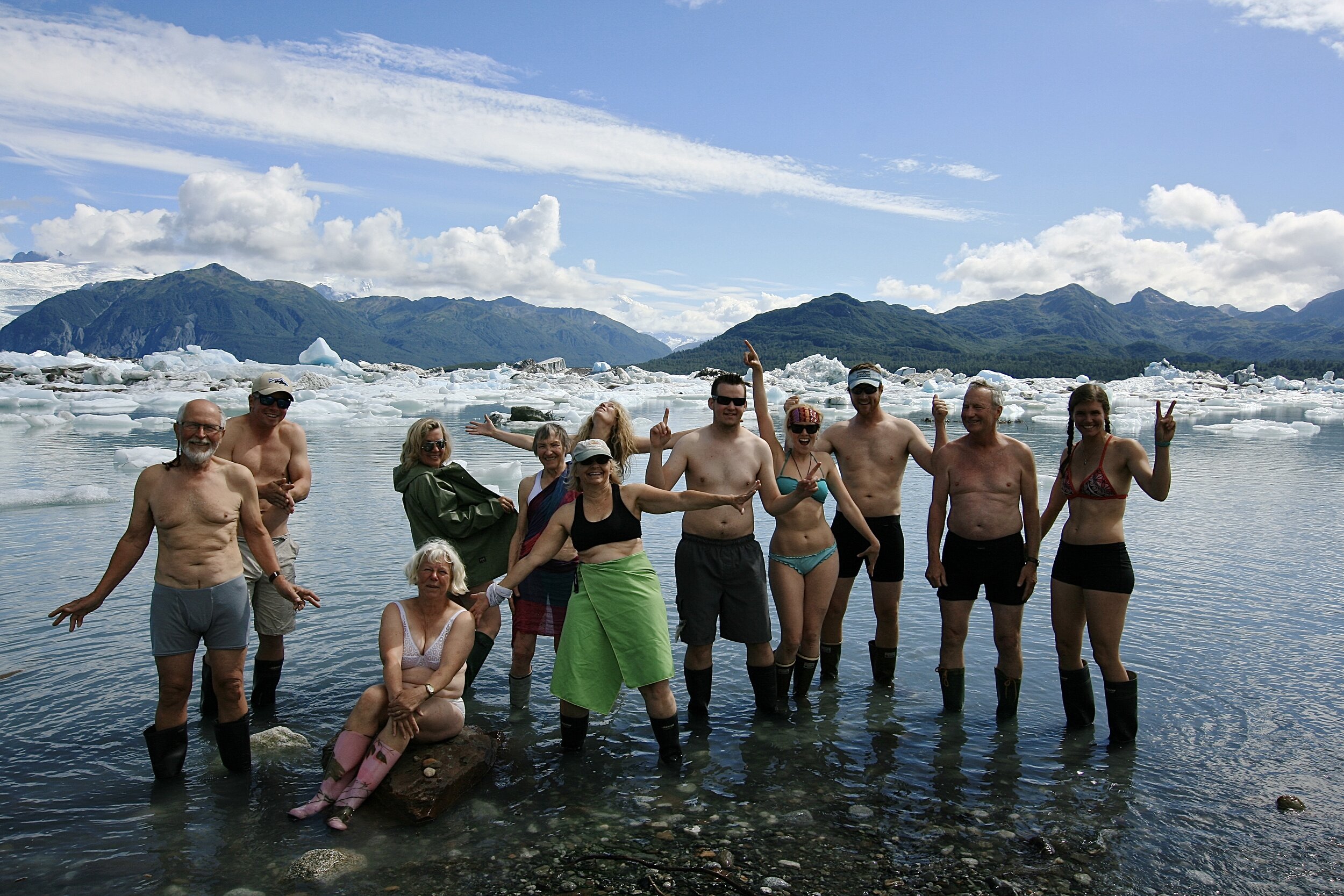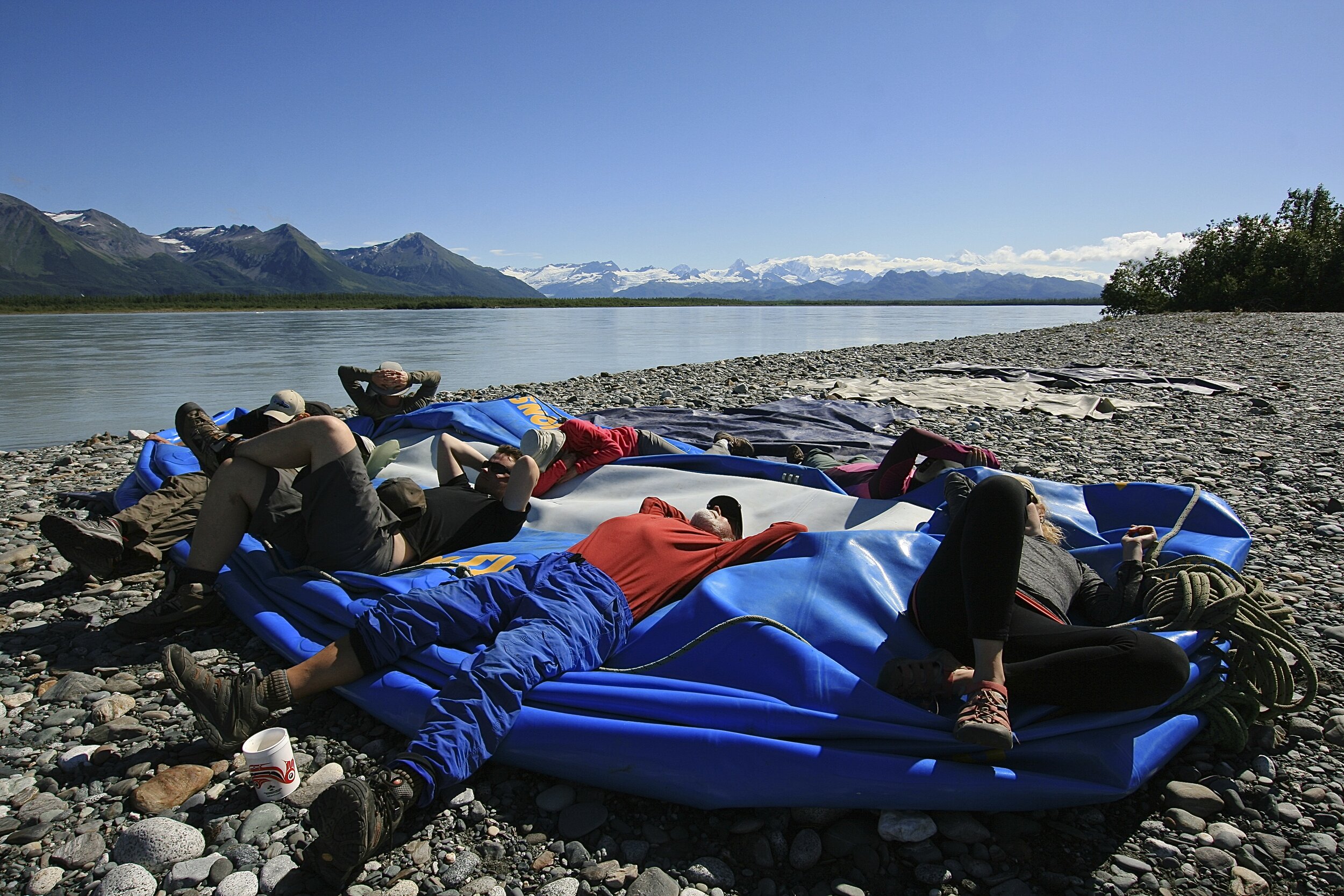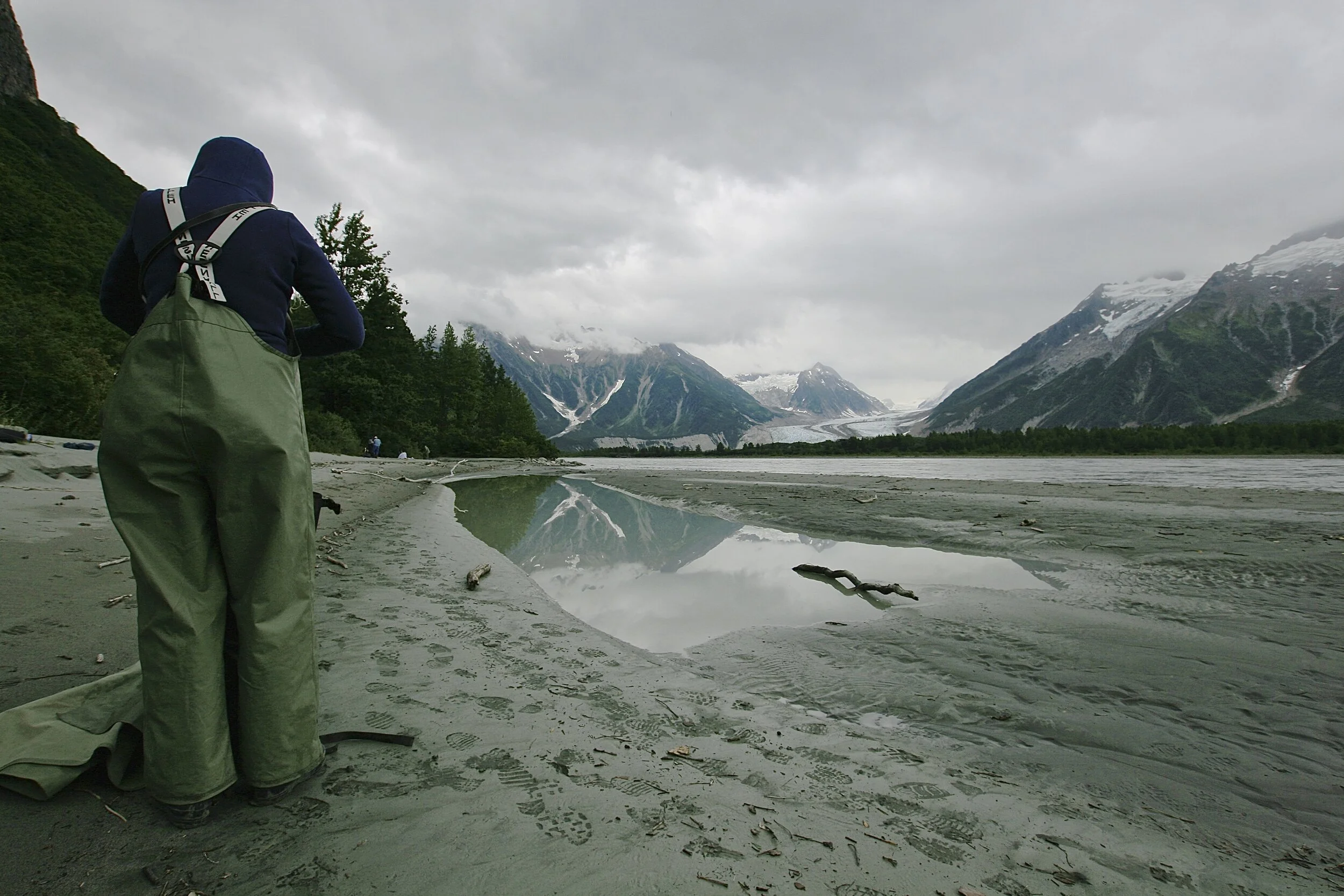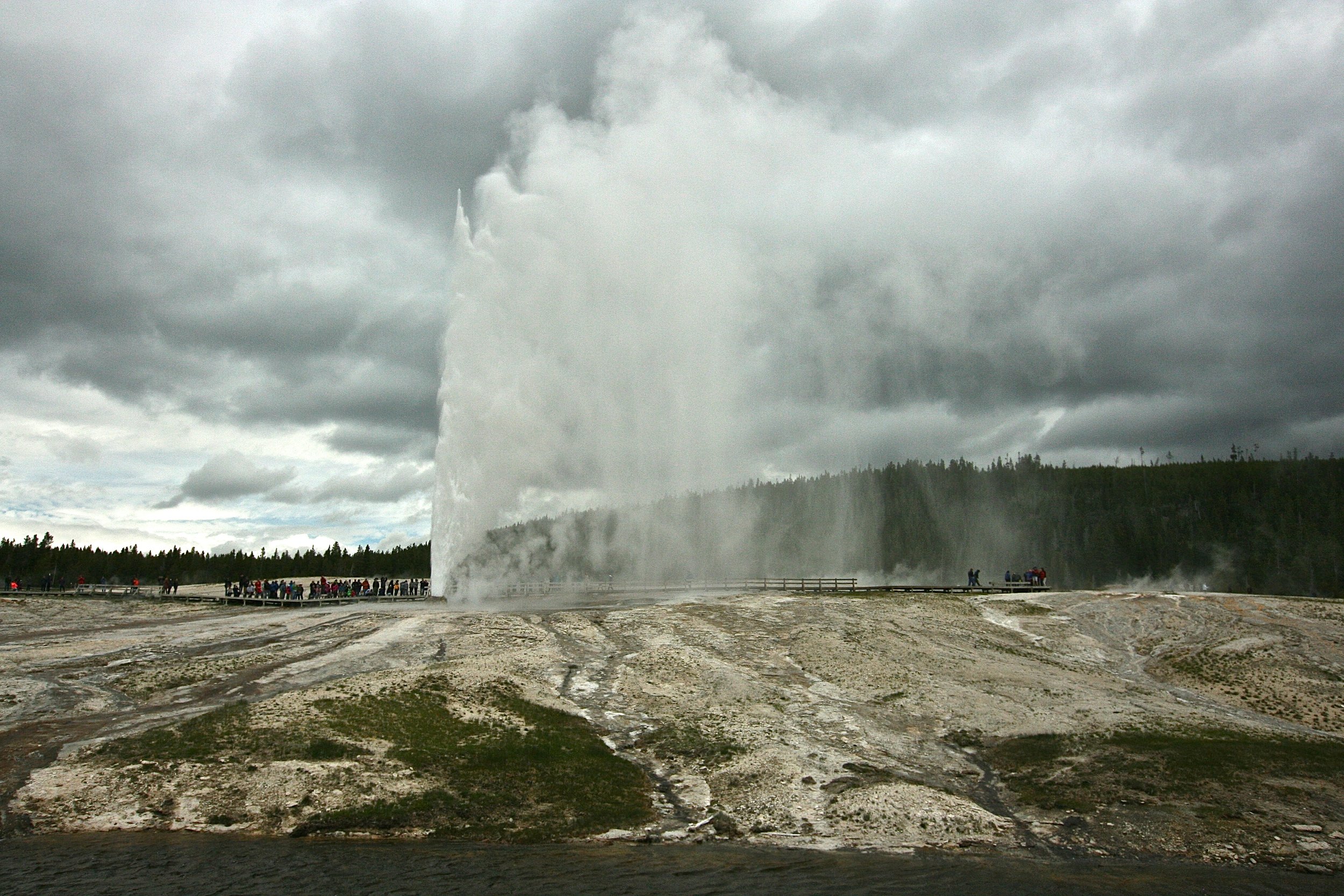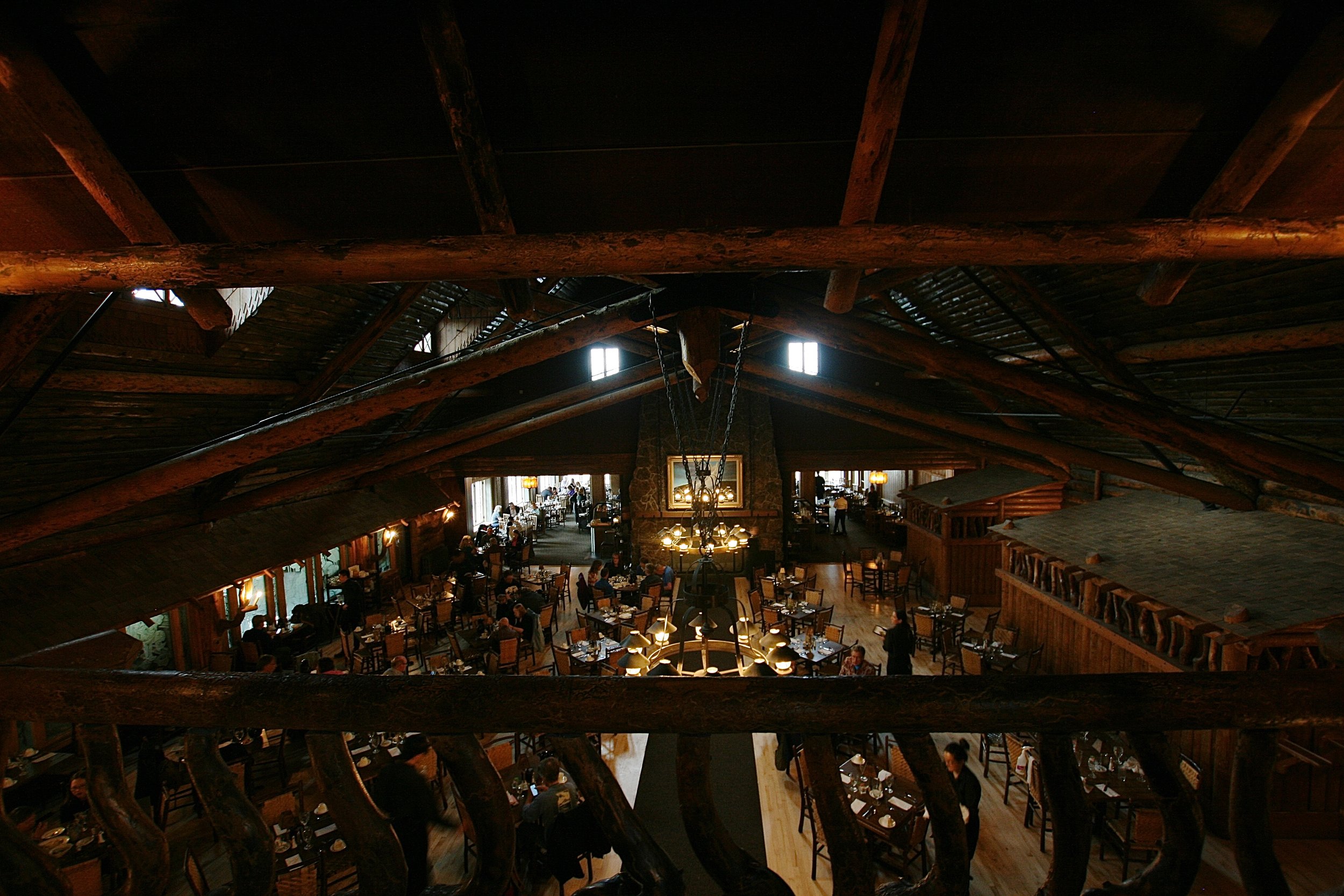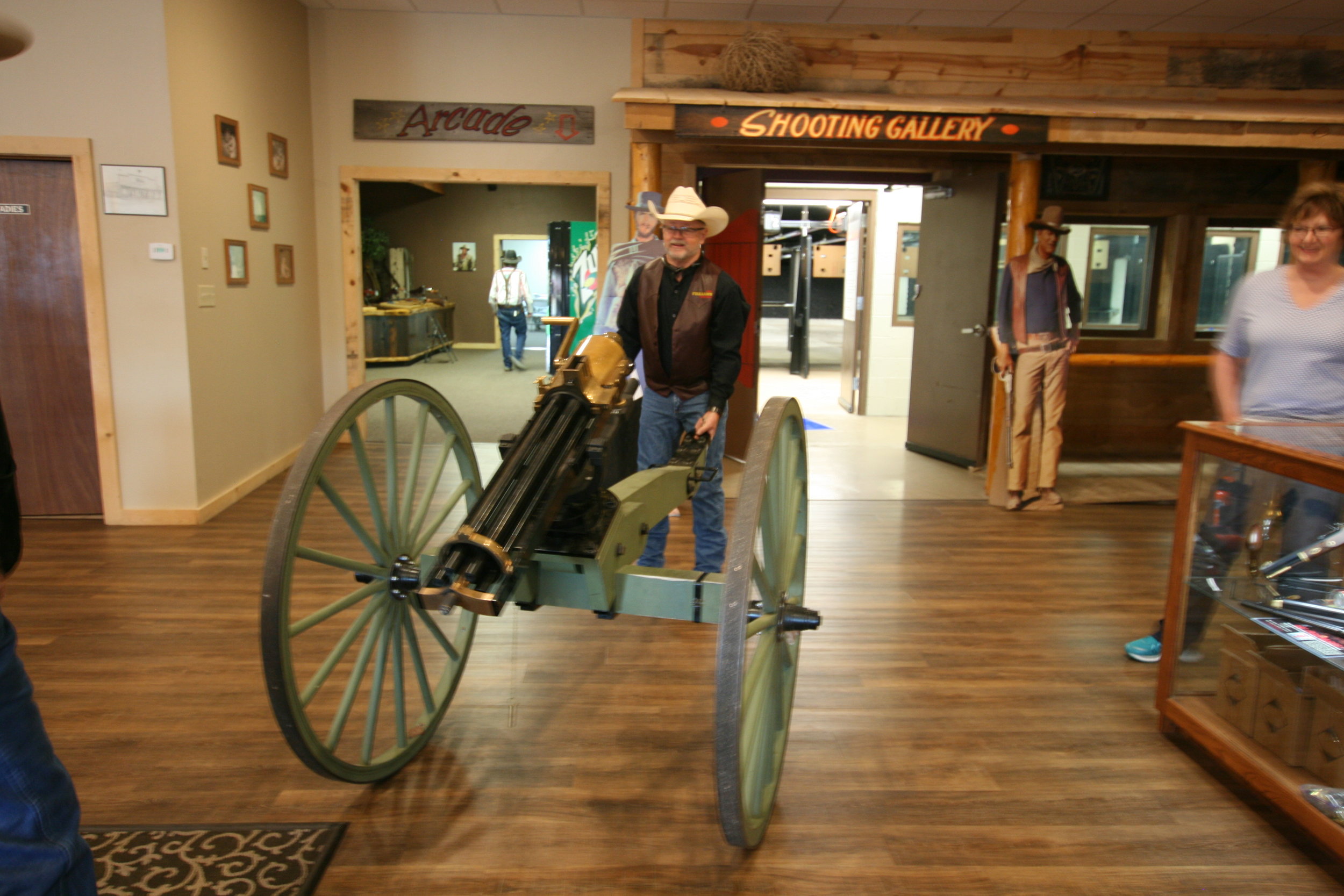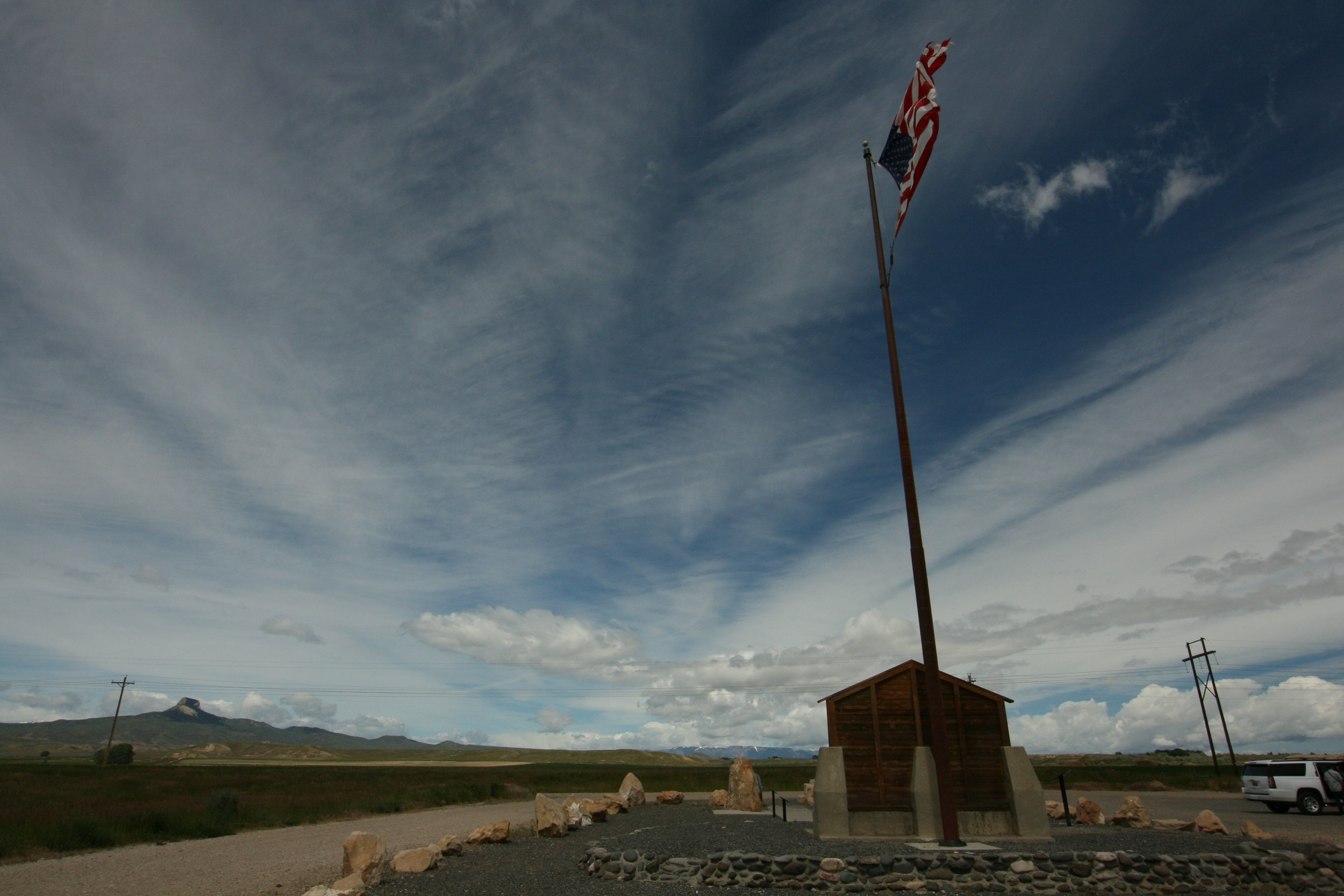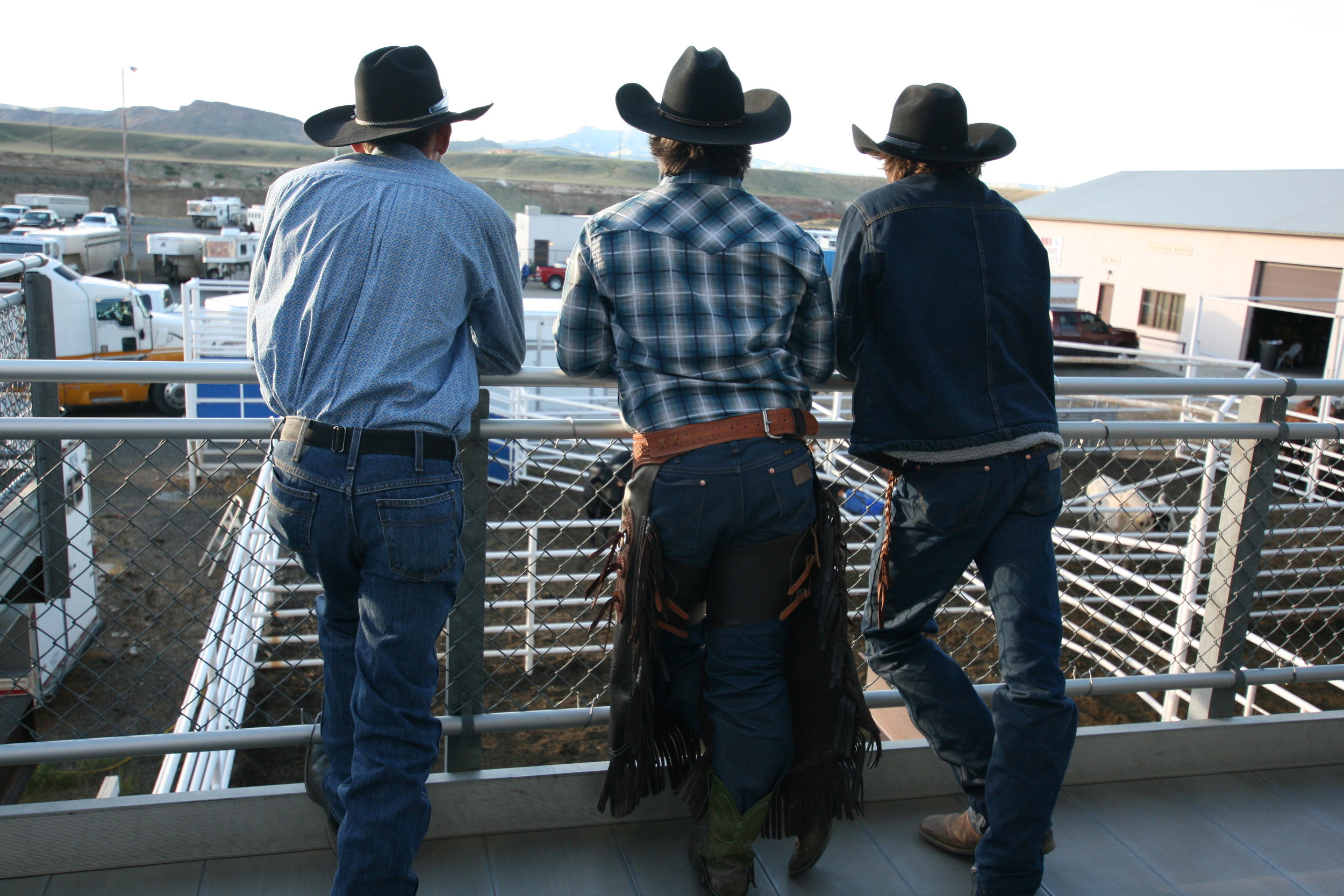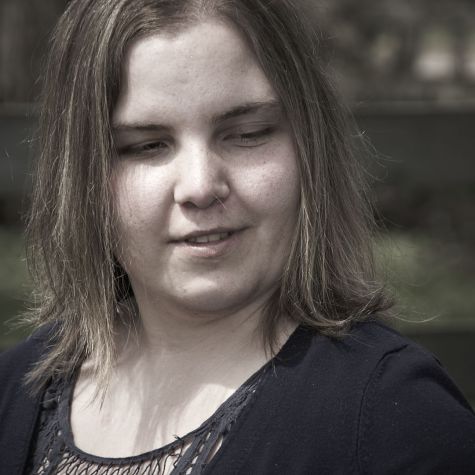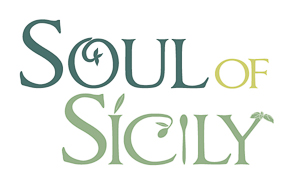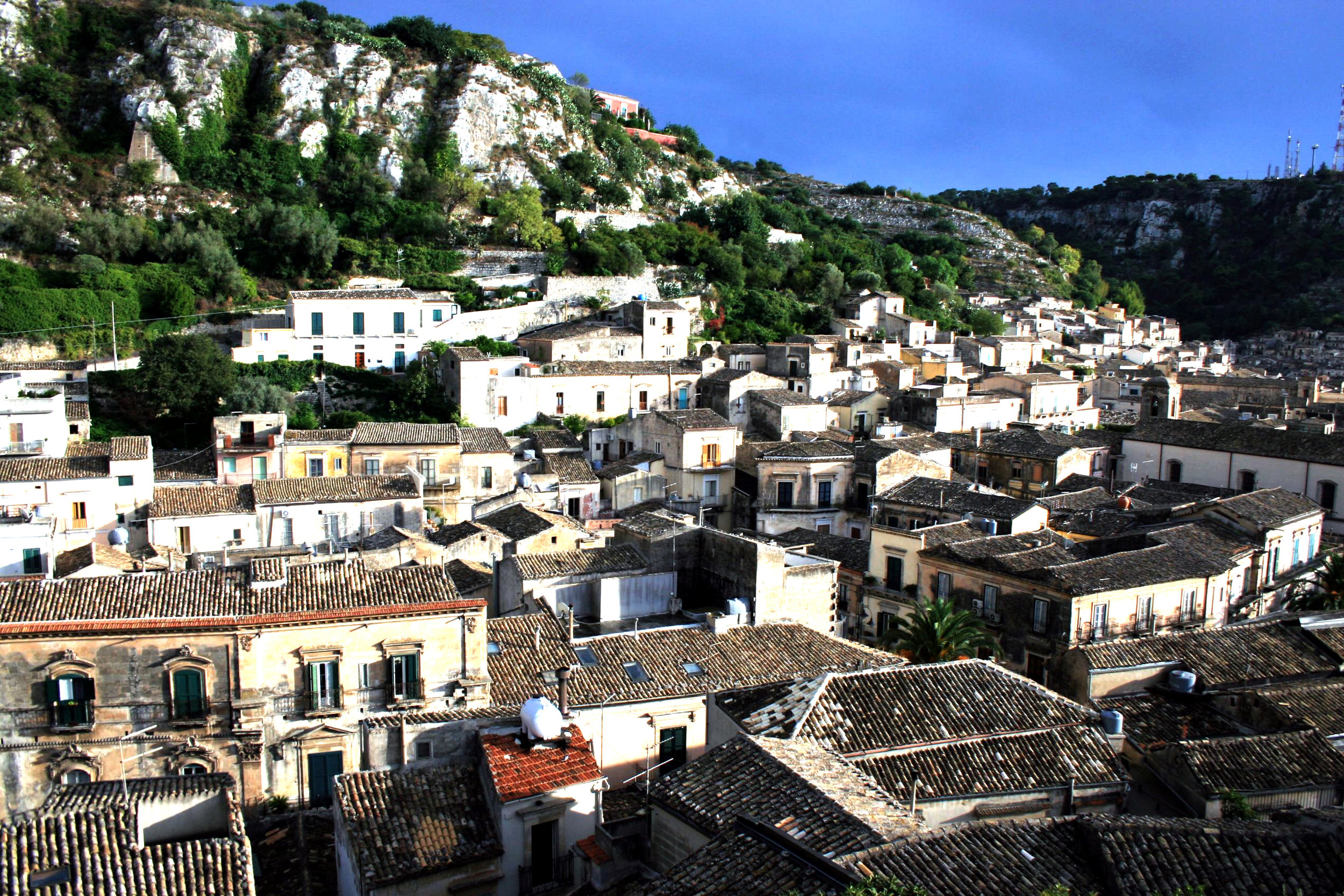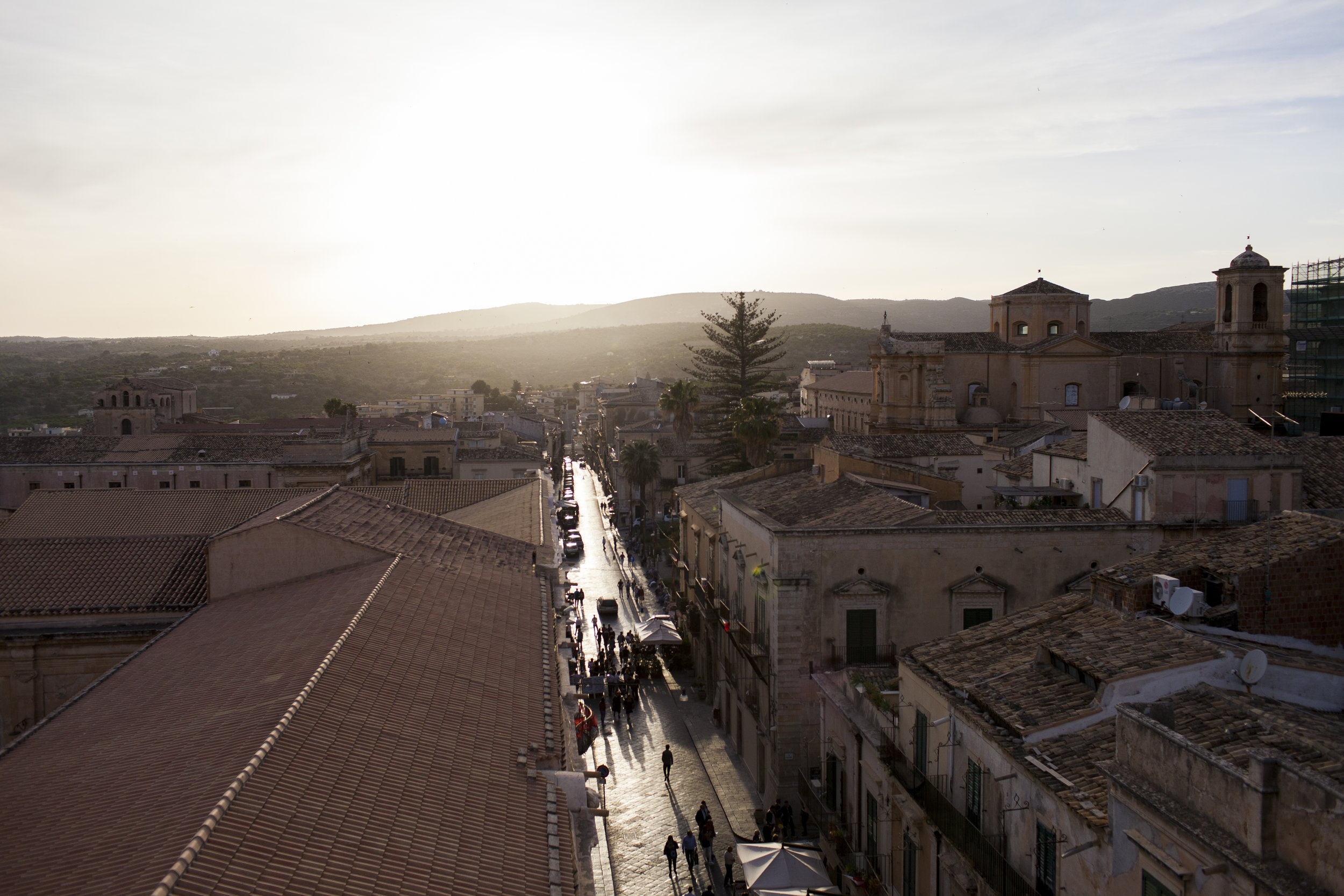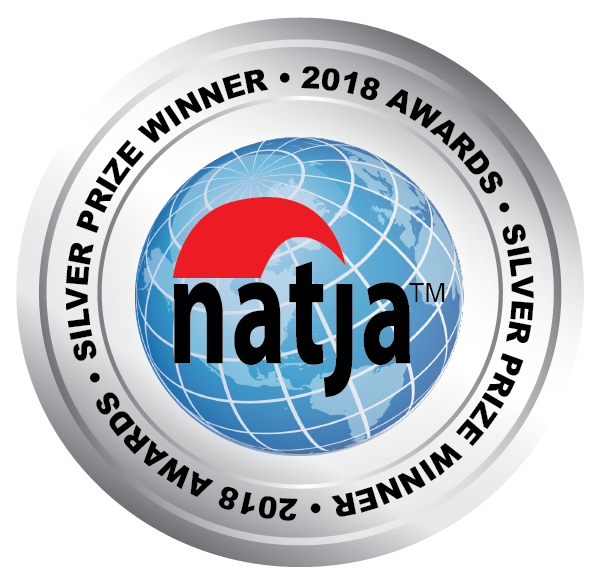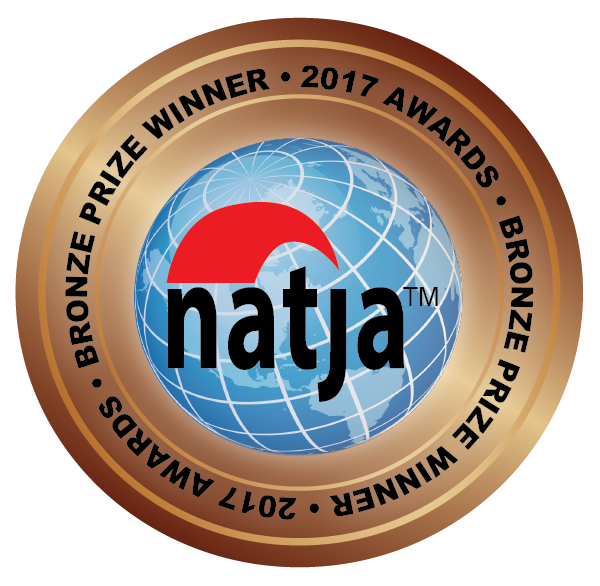In today’s show, Liz and Jeff go inside the Yukon Quest, a thousand-mile sled dog race through the subarctic wilderness, from Fairbanks, Alaska to Whitehorse, Yukon.
Liz shares working with award-winning war correspondent and photographer Katie Orlinsky. As Katie explains: “The race takes place in the dead of winter along a route that was used by sled dog teams during the gold rush to deliver mail and supplies. The Yukon Quest is considered one of the toughest sporting events on the planet: Temperatures frequently reach minus 50°F, winds can blow over 40 miles an hour, and the days are so short that most of the race happens in the dark.”
Hear today how everyone from mushers and race organizers to spectators and dogs — Alaskans and Yukoners alike cherish every minute of this remarkable celebration of far northern life.
Liz Beatty with Jeff Sammut on SiriusXM Canada Talks — This Week: Rafting the Alsek and Tashenshini
Scenes from the Alsek and Tatshenshini
Photographed by Liz Beatty
Epic Girls’ Getaway
(by Liz Beatty for AARP Magazine)
Four miles in from the broad mountainscapes of southwest Yukon’s Haines Road, our van heaves and creaks down a steep tree-lined track, then plows through a pond-sized puddle below. A quick hard left through deep black mud brings us to Dalton Post — “Shäwshe” to the Champagne and Aishihik First Nations people who’ve fished here for 8,000 years. This is our ‘put-in’ on the shores of the Tatshenshini, about 10 miles from the headwaters of what river elders dub North America’s wildest river system— no permanent human habitation for 160 miles beginning to end, and coursing through the world’s largest wilderness preserve, its biggest non-polar icecap and Canada’s highest mountains. Four veteran guides check riggings, pass out lifejackets and review safety tips. Our van driver Angela waves goodbye.
We have reached our point of no return. Once we push off, the river, less than 100 yards wide here, goes but one direction and save a $15,000 helicopter evacuation, we’re all in for the ten days it takes to spill out into the Gulf of Alaska. Like toddlers stuffed in snowsuits, we wait to board with snug PFDs strapped over ill-fitting rubber rain gear, our still-clean river bags in hand. My friend Roadzy leans in, “Rock ‘n roll Lizard.”
Roadzy and I first bonded over cheap Chianti on the floor of our dorm hallway, wrestling the riddles of western philosophy. It was first-year university and with every sip, we were smarter, more fabulous — a heady, transformative time. Thirty odd years later, still craving transformation and lamenting the detritus of life that in very different ways has clogged our creativity (hers visual, mine in words), we uncovered our shared fascination in far north. Oddly, it was bottle of more expensive chardonnay that brought things into focus. “Let’s do it!” Roadzy blurted. “An epic girl’s getaway.”
Now, as the Dalton Post clearing disappears behind the river-rock shores and stunted aspens of the “Tat’s” next bend, I see our adventure ahead as very much a leap of faith —in ourselves, in our friendship and in ways we have yet to discover.
“Lie face down, hands over your neck and legs spread eagle.” says our lead guide Mike. “If that doesn’t stop him from flipping you over, time to fight for your life.” This matter of fact climax to our “bear talk” about a region with the highest population of grizzlies in North America is sobering. This first night, we don’t venture 50 yards alone from our compact expedition tent.
But as the river grows, so does our threshold for wild unknowns — like the torrent funneling us through the upper Tat’s long narrow canyon. Amid the quiet serpentines that follow into prime moose country, peppered with spruce and beaver marshes, we learn to call out “Ay Oh, Ay Oh” with every step ashore, giving notice to furry ones. Along ever-morphing outwash planes where timber wolf, arctic fox, and massive grizzly prints abound, we grow accustomed to nightly rituals like removing “smellies” from our tents — hair products, even clothes with food spills. And every time we do all this and nothing happens, we understand better Mike’s blasé assertion: “If we follow the rules, likely they will too.”
By day six, hair stiff with river silt, we hike into the bush, over bear scat and up one of countless unnamed mountains, dotted with white dall sheep. Six hours later, we celebrate riverside over boxed wine and pork tenderloin. “Bear!” calls fellow traveler Margret. Silently, we marvel — the massive brown grizzly lumbers over pebbled flats, pounds into the river, barely loosing ground to the current before emerging just 100 yards up stream from our “groover”, the camp loo. About an hour later, I disappear to do my business, just another creature, and into the twilight I belt out what has become my private twist on “Ay Oh” — Cry Me a River.
Great journeys build to culminating moments that alone can justify why we go. We find ours beyond the merging waters of the O’Connor, the Tkope, then the Henshi Rivers, where the Tat transforms from surging tributary to enormous spectacle. Mike leads the four rafts, standing oars in hand, scanning our route through myriad outwash braids across its half-mile breadth. The sun and a rare tail wind propel our record run, almost 50 miles from Sediments Creek to the Confluence in one day. Our destination — Petroglyph Island, a tiny mystical nub with prehistoric rock drawings, a few hundred meters before the Tat joins with the even broader Alsek. Three sweeping glacial mountain valleys, two massive rivers, two parallel fault lines more active than the San Andreas, 27 glaciers (or so we counted) and a grizzly superhighway, all merge in what feels like the bellybutton of the universe.
Time here is dreamlike. Cloudless skies, bald eagles soaring above, we hike to the island’s farthest downstream edge. Minds clear, hearts full. I write. Roadzy draws. We collect river rock and banter about the past, now and what’s next with the eagerness of two people who haven’t just spent the past eight days in the same tent. And on our late return to camp, a guide hands us Big-Gulp-sized G&Ts in plastic mugs. From my river bag, I grab an egg-sized speaker with my solar-charged iPod. Soon, with bare feet and long shadows, our entire Tat family dances riverside to Earth Wind and Fire — twelve grateful specs smack in the middle of a titanic panorama.
Three days later, on an airstrip of glacial scree just short of the Pacific, we board a 40-seat Hawker then fly low through clear skies, back over the calving glaciers of Alsek Lake, and the rest of our beloved rivers. Then from Whitehorse, we’re Toronto bound. Roadzy and I have long forgotten— it’s 30 years since we’ve spent more than 36 hours together. “Come to my place tonight,” I ask, not ready to loose our Tat bubble. “I have Chianti. We’ll debrief!”
Roadzy smiles. “Let’s do it.”
Petunia
Music City Beyond Honky-Tonk
Cowboy boots and honky-tonk, everything, everyone lit up on a Saturday night beneath neon signs, not a few in the shape of guitars. All this is what’s made Nashville one of the hottest destination in the US. But all this, is not what you’ll fall in love with.
This is Native Traveler in Music City. We came in search of the Nashville beyond the clichés. We wanted to unearth one big thing about this place that might change the way we saw everything. And I think we found it. Listen in.
(Feature: 2:05; NPR Producer, Jakob Lewis: 9:47; Creative Curator, Libby Callaway: 23:25)
Meet The Tuba Man of Nolansville Pike, Nashville. The magic of Nashville has always been its big eclectic community of creatives — most of whom will never make it onto billboards. Image: Jakob Lewis, producer of the NPR podcast Neighbors in Nashville.
Connect to Jakob Lewis:
Web: www.neighborspodcast.com and www.voxfamilia.net
Twitter:@NeighborsNash
Insta:@NeighborsJakob
Connect to Libby Callaway and Noelle:
Web: www.thecallaway.com Web: www.noelle-nashville.com insta:@libbycallaway1970/ insta:@the_callaway
Strolling “East Nasty”
By Liz Beatty
The 20-minute walk from my East Nashville Airbnb reveals that breathtaking change that every local tells you about. Nearby my tidy craftsman cottage, a luxury SUV occupies a groomed driveway next door to a scruffy bungalow with a torn brown plaid couch on the porch. In one block on the main drag, a hipster haberdasher sells $200-plus fedoras next to a tattoo parlor, a pawnshop and the cherished breakfast haunt, Nashville Biscuit House. Inside, a waitress serves ‘southern meat and 3’ (one choice of meat and three sides) under five dollars to locals she knows by name. Their “East Nasty” has somehow morphed into the coolest part of town.
Recent bursts of gentrification have spawned trendy eating spots like The Pharmacy, The Treehouse and just across the bridge to downtown, the reimagined industrial digs of Pinewood Social, complete with bowling alley and interactive letterpress art installation. There’s the Barista Parlor Café with original coffee packaging and portraits by 21st century letterpress printing master, Bryce McCloud. A playful genuine reverence for local roots inspires a striking concentration of vintage clothing, art and vinyl shops—imagine, the lore-filled United Record Pressing is just across town. Among the best, Fond Object Records, and Black Shag where I covet a fuzzy fuchsia ‘70s show outfit of rock and blues pioneer, Edgar Winter.
Mostly, this quiet enclave east across the Cumberland River feels like the crash pad of Nashville creatives. Chill recording spaces like the Bomb Shelter thrive just beyond the orbit of Nashville’s hit-making studios. Venues like The Basement East and Family Wash showcase grassroots talent. Maybe best of all, the vibe here is cool, but in large swaths, unkempt, a neighborhood still figuring itself out. Take the Mas Tacos Por Favor on Mcferrin Ave—just a rustic step above the owner’s original old food truck, it draws a lineup of loyal locals at 3pm on a Monday. “This fish taco is a work of art,” I mumble to the bar keep through a half-full mouth. She grins and slides over my second margarita in a plastic cup.
Iceland Like Local
In a land defined by otherworldly, unpeopled spaces, and the isolation of islanders — it makes no sense to explore here en mass. In this episode, Native Traveler shows you the Iceland of Icelanders.
(Start: Feature; Interview with Mike Poppe of Trufflepig — 7:30; Interview with Wake Up Reykjavik — 20:00)
Memories of Otherworldly Southwest Iceland
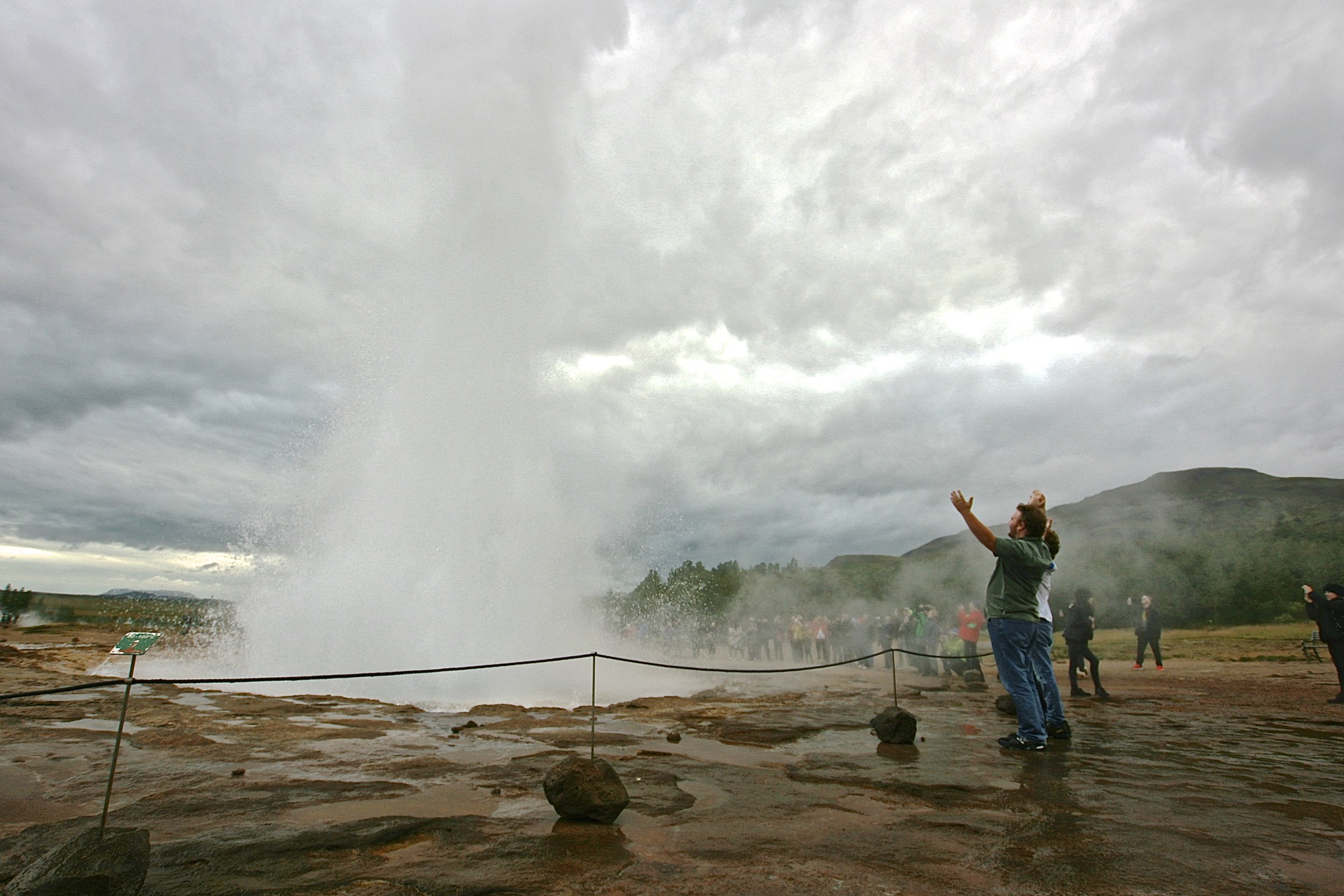

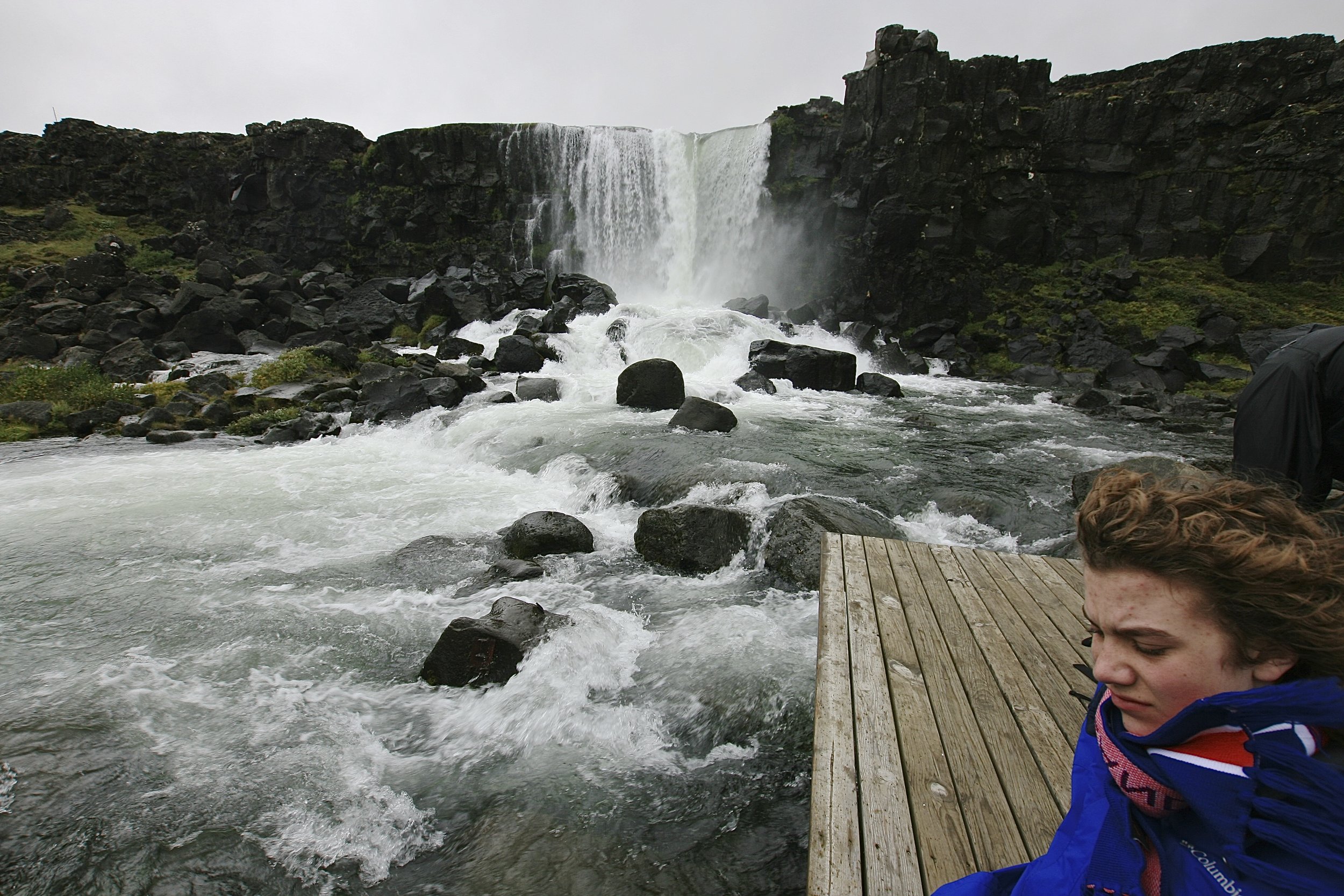
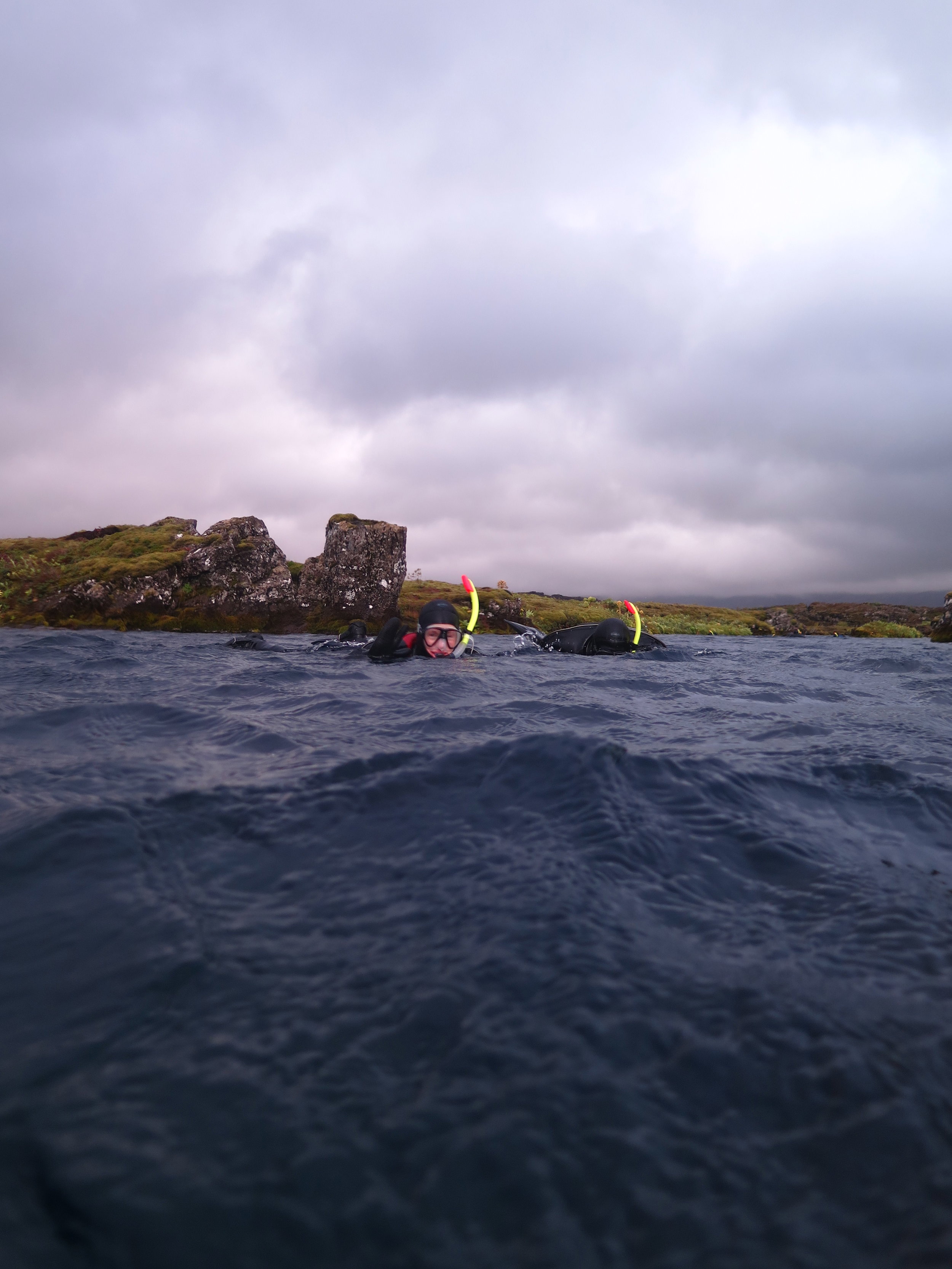
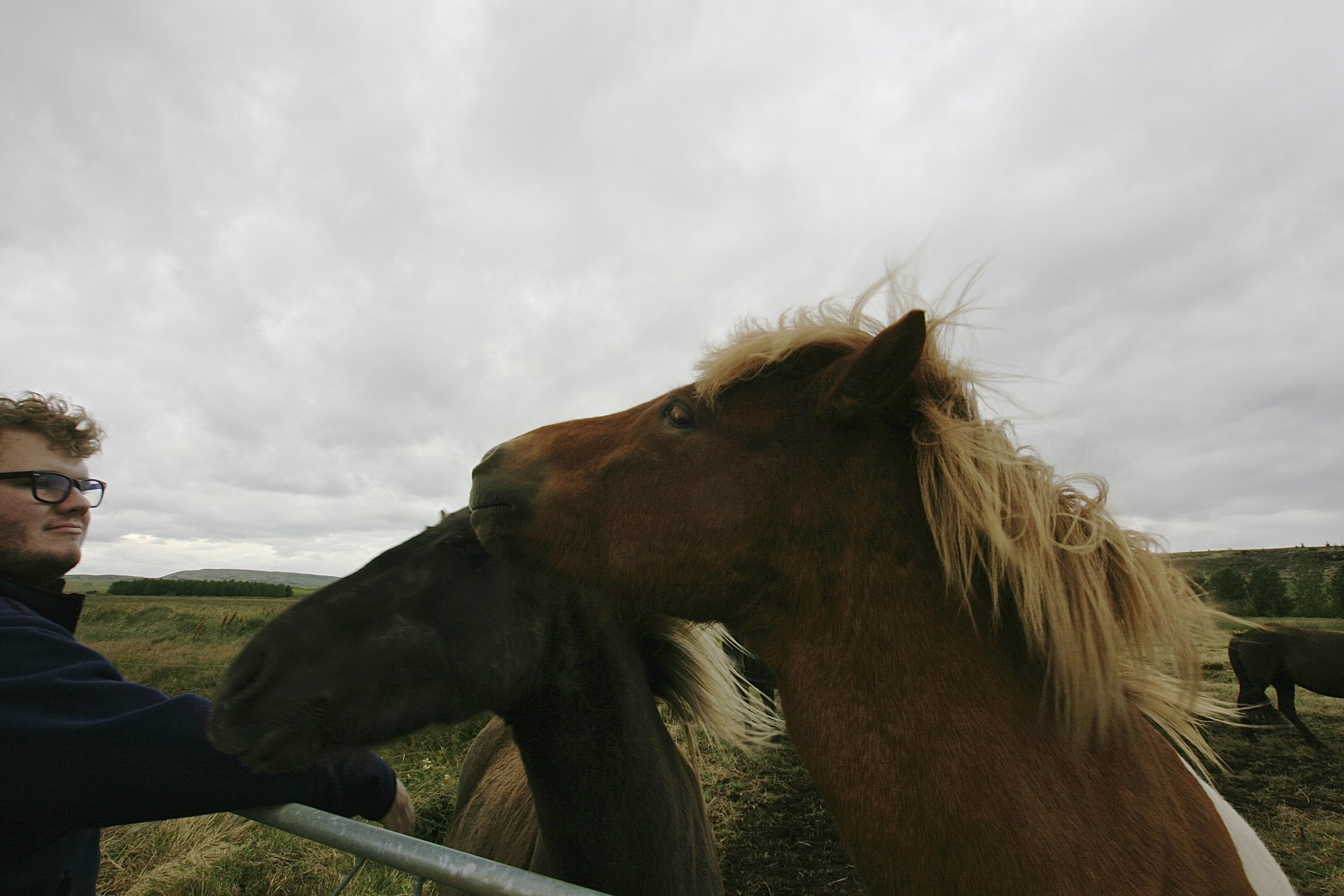

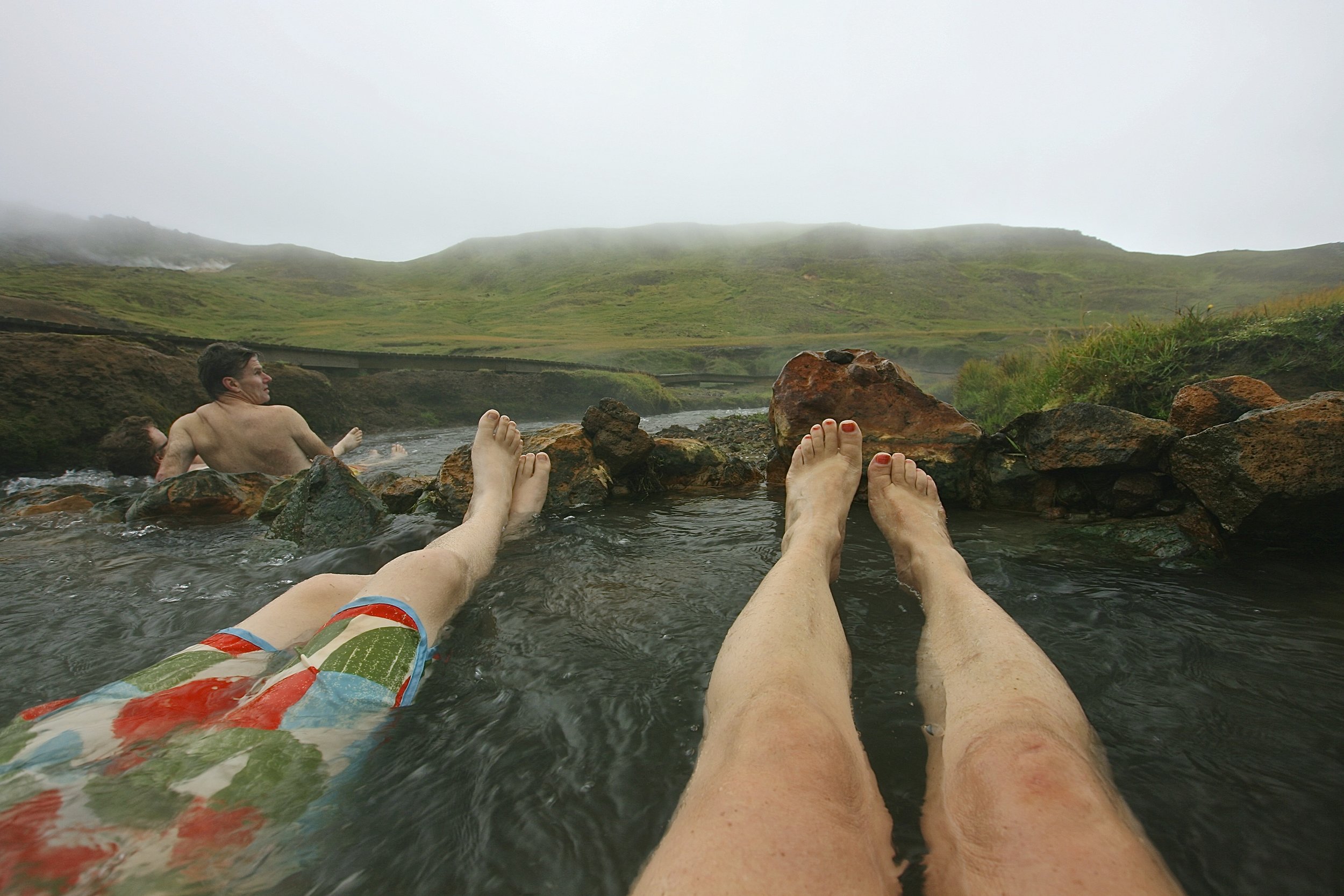
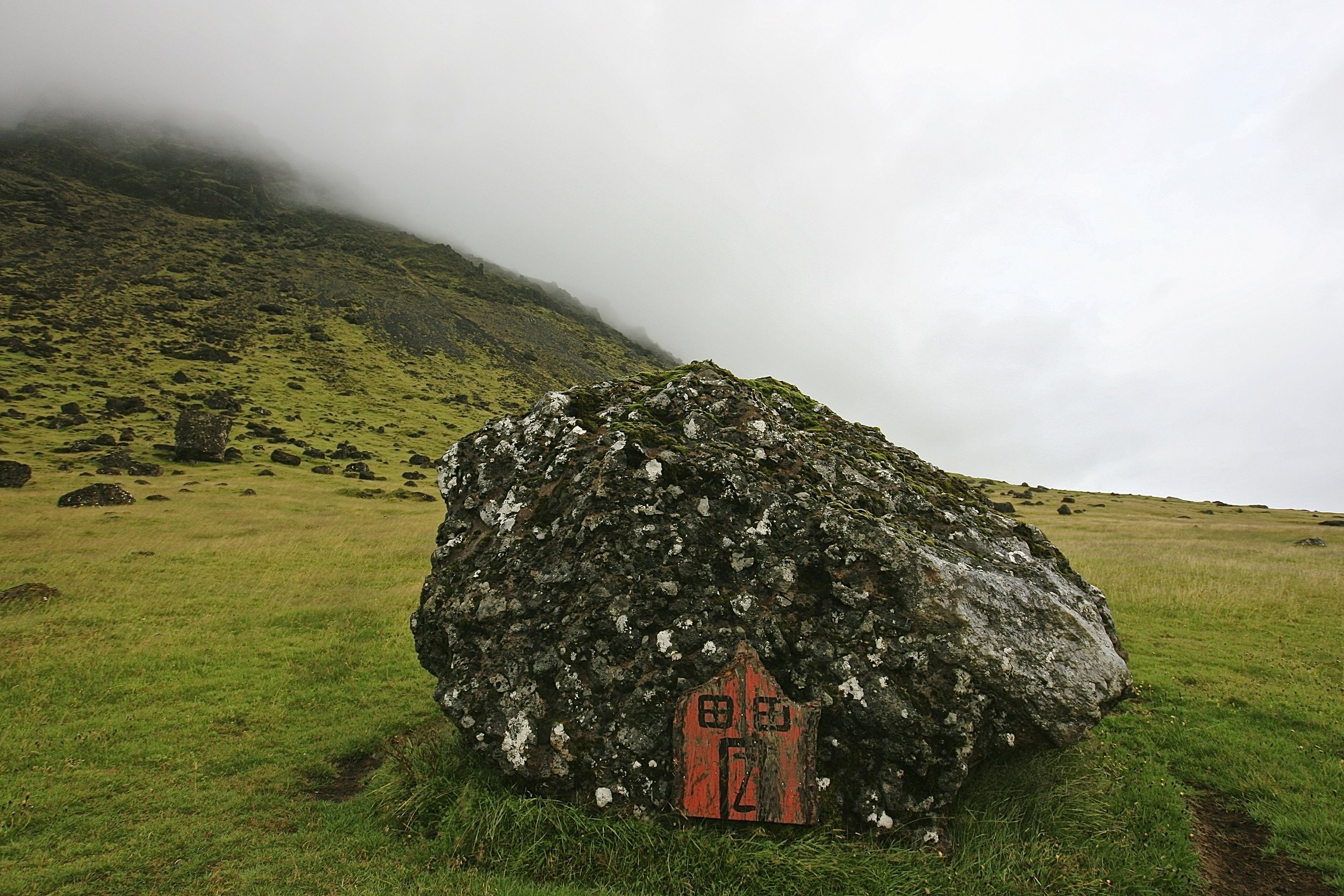

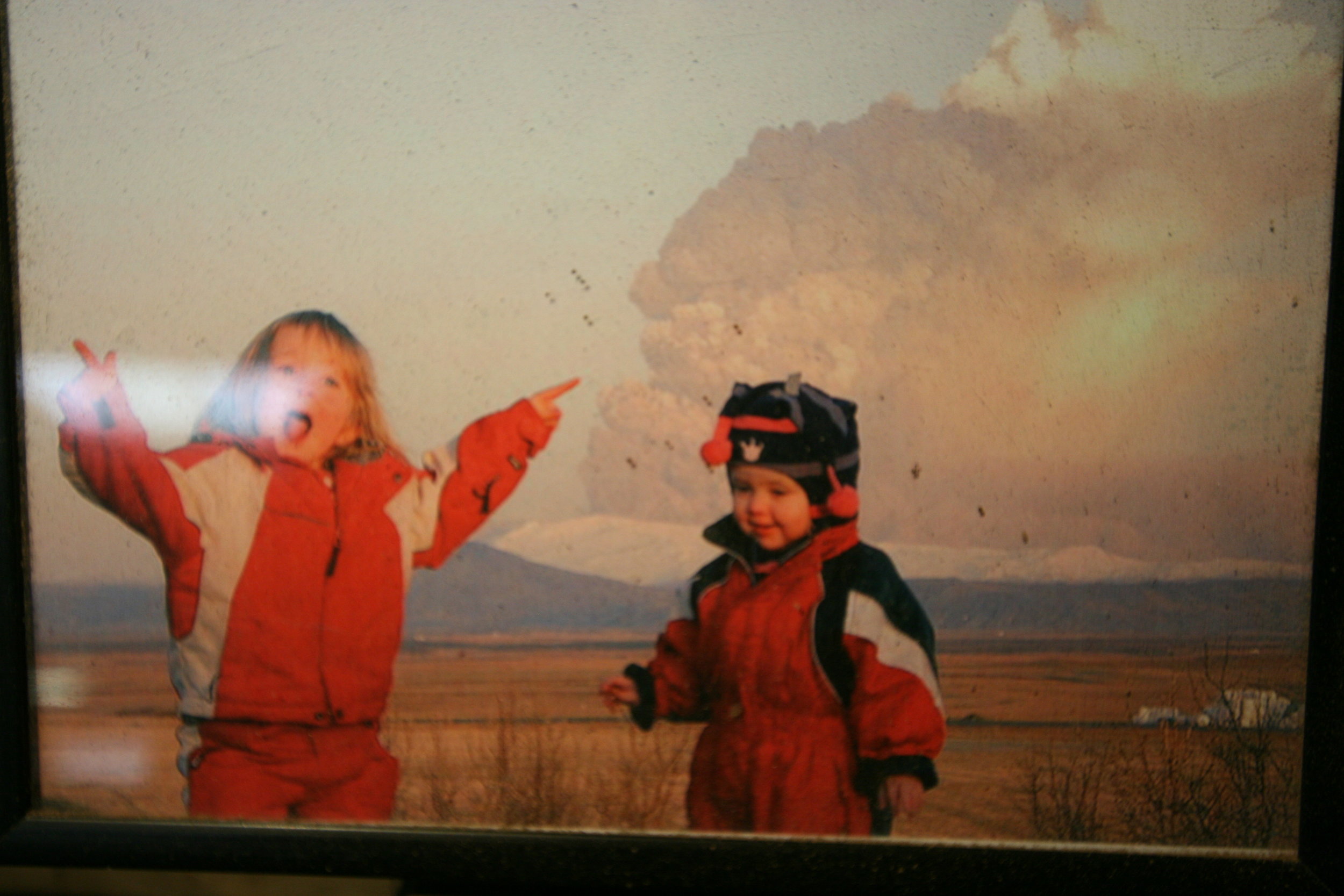


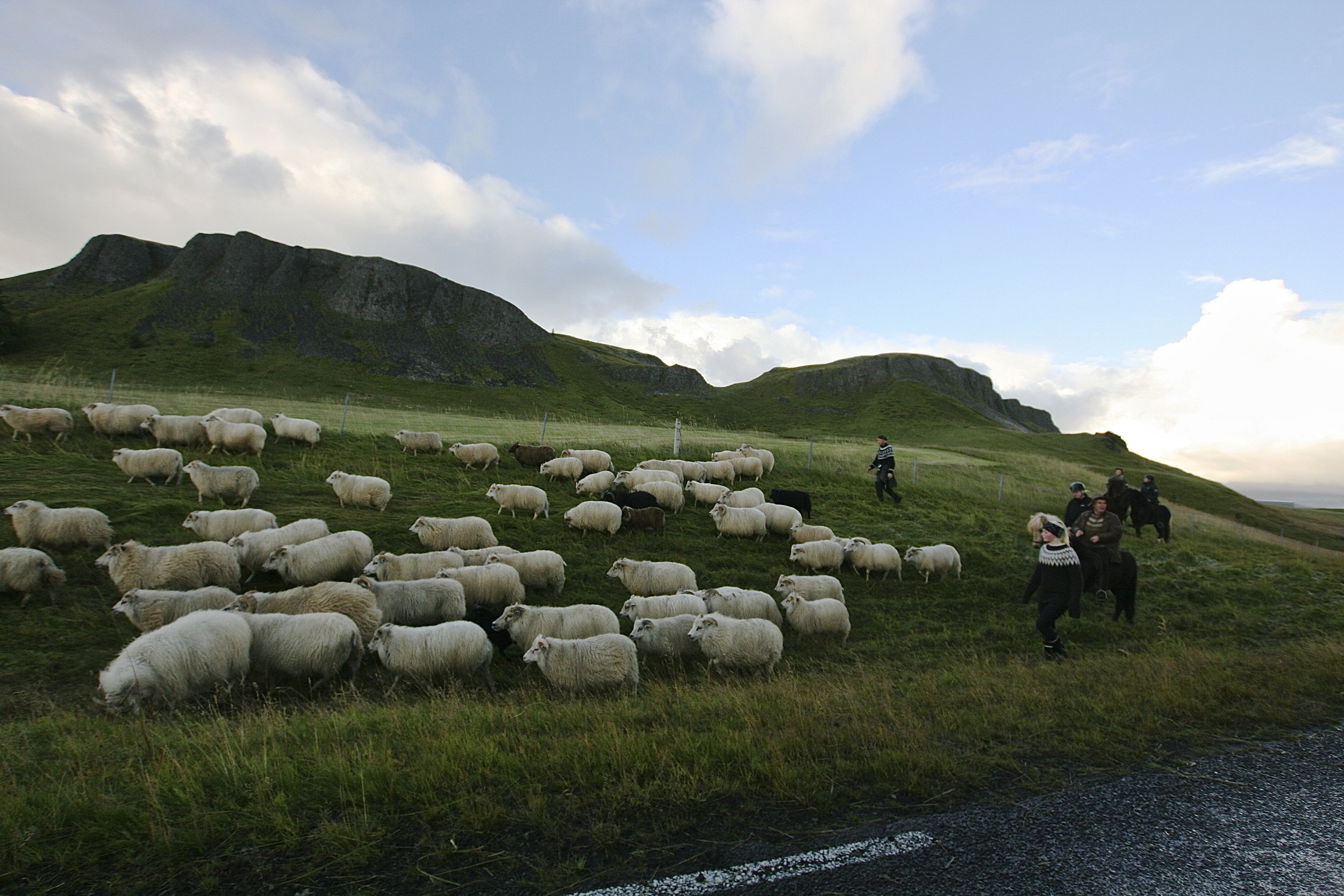

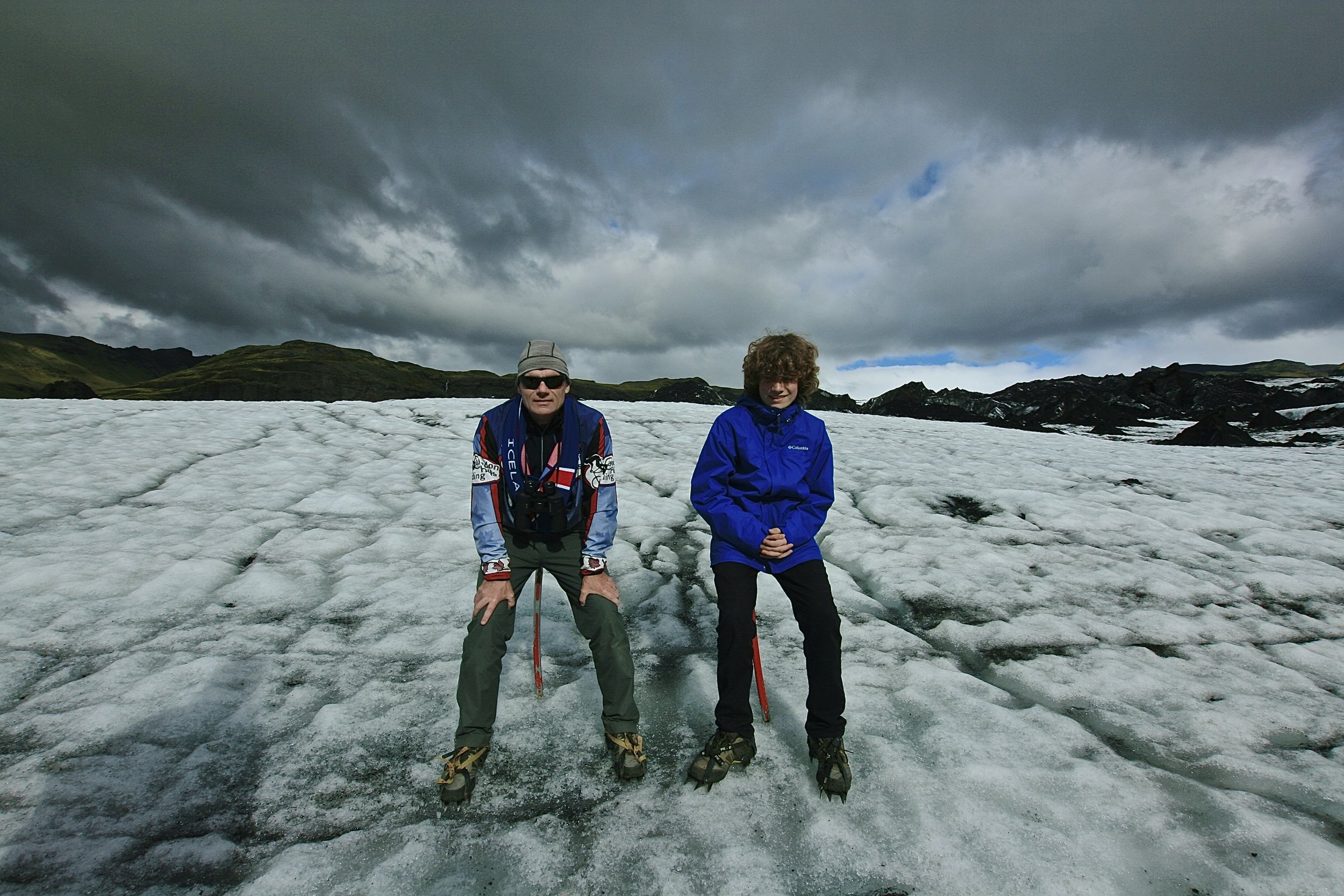
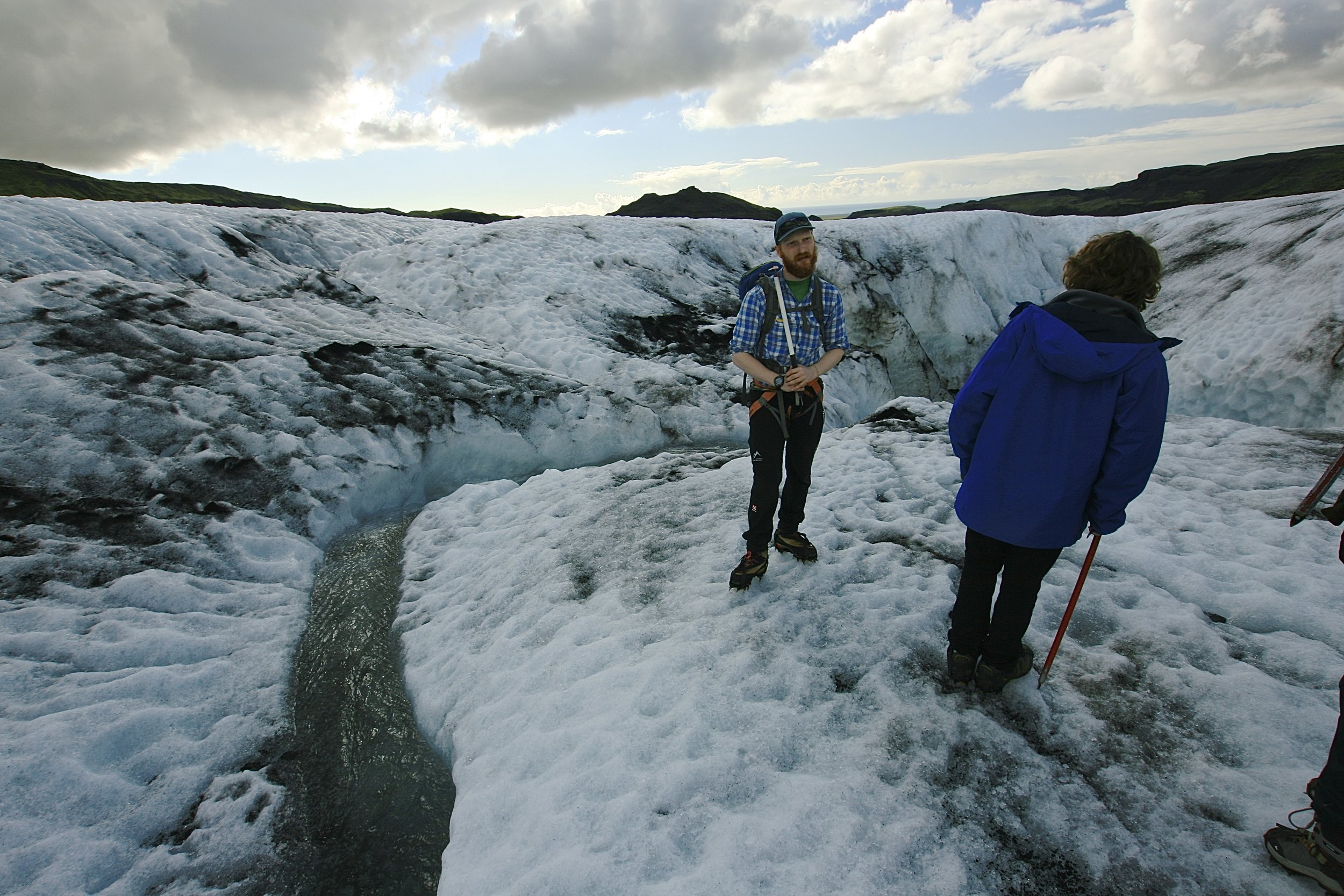
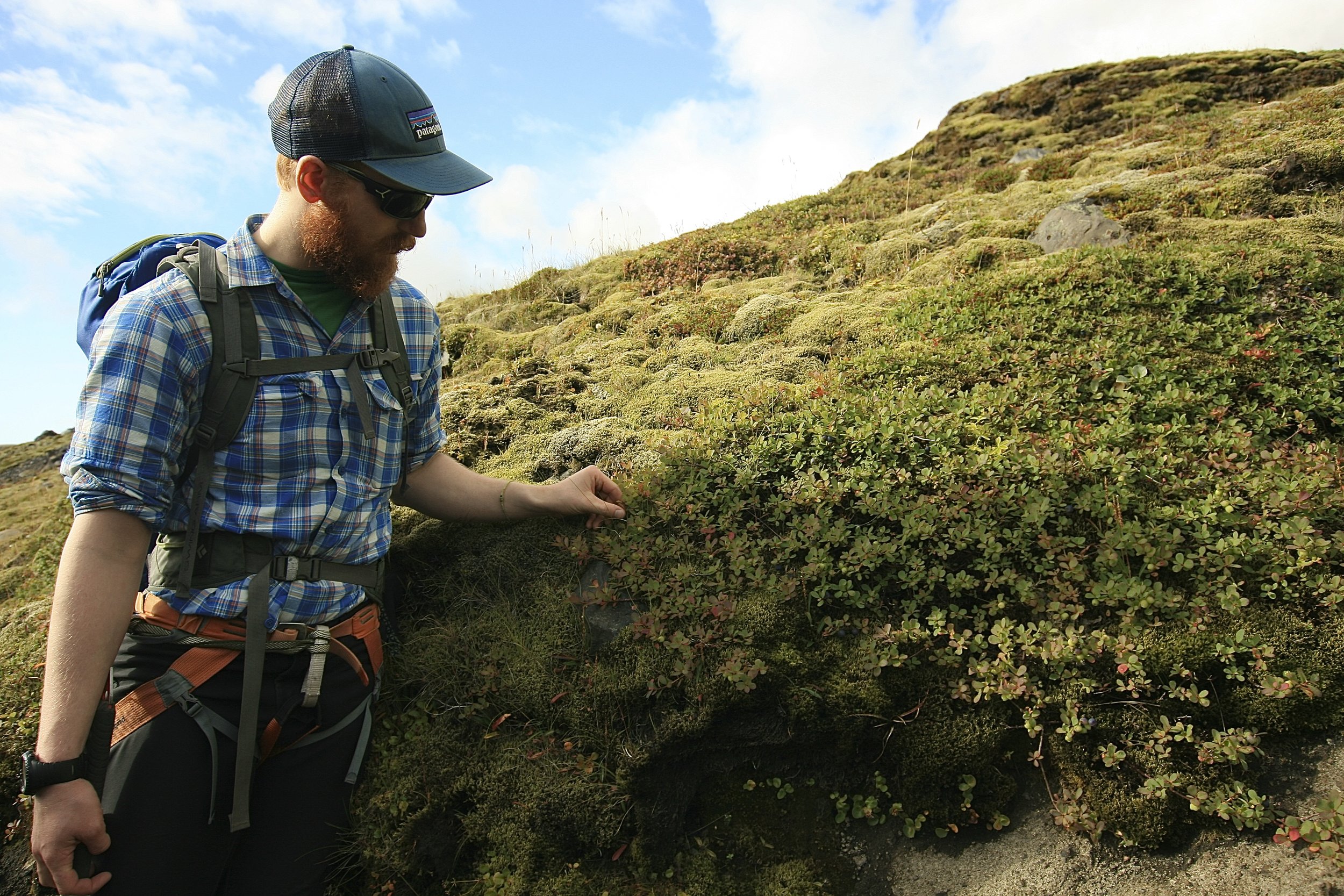

Welcome to Cody
A place like Cody, Wyoming and surrounding Yellowstone country feels like the beating heart of what people around the world once dreamed America to be. Irrepressibly authentic, the bellybutton of a frontier that’s inspired a thousand spaghetti westerns. It seems America is still its best self here, but for a lot of reasons that may be harder to pin down than one may first think. Listen in...
(Feature—Welcome to Cody: 00:52; all about Cody, Buffalo Bill and Cody Nite Rodeo 13:55)
Learn More About Cody and Yellowstone Country
Learn More About Historic Yellowstone National Park Lodges and Experiences in the Park
Scenes of Cody and Yellowstone Country
Rodeo, Buffalo Bill and Japanese Americans in Cody, Wyoming
Vermont-based writer, Bart Beason, wrote this great overview of Cody and Yellowstone for Everett Potter. Click here to read his story...
Taste of the Old West in Cody, Wyoming
My friend Sue Reddel, AKA Foodtravelist.com has another great take on the Cody/Yellowstone experience! Click here to read...
Native Traveler's Show on No-limits Travel for the Blind
Today's show is all about exploring the world without limitation — specifically for those who are blind. It's about breaking down stereotypes and empowering people with knowledge, both the sighted and the sight-impaired. It's also about celebrating those who are lighting the way for blind explorers everywhere — some through ground-breaking global advocacy and education, some by founding innovative travel companies and others simply by example, heading out on their first solo journey as a blind person. Listen in.
(Feature—The Year of the Rooster: 00:57; Daniel Kish: 14:31; Amar Latif: 33:28)
Feature Contributor Kerry Kijewski
Kerry Kijewski is a writer, blogger and traveler living in Woodstock, Ontario. Kerry is also blind. As our feature contributor in this show, Kerry shares her experience traveling to Mexico on her first solo trip. Learn more about Kerry and her writing below.
Daniel Kish — Founder and President of World Access for the Blind
Daniel Kish is a remarkable man and world traveler who happens to be blind.
He is the lead founder and President of World Access for the Blind. His organization empowers blind students and educators with a self-directed, no-limits approach along with expertise in perceptual development and positive psychology. WAFTB promotes global public education on all that his organization teaches, as well as advocating for positive change in the connection between sighted and sight-impaired people around the world. He has traveled solo to over 35 countries.
Daniel holds Master’s degrees in both Developmental Psychology and Special Education, emphasizing perceptual development, family dynamics, and children at risk.
He also holds two national certifications in Orientation and Mobility, COMS and NOMC. Daniel is the first totally blind individual to obtain both certifications.
Daniel has been voted one of the top 10 speakers at TED2015 and PopTech’s ‘Talk of the Day’, and featured in over 150 major publications and broadcasts reaching over 2 billion people around the globe. He has served thousands of clients from Fortune 500 corporations to individuals.
We're honoured Daniel took the time to join us on Native Traveler to talk about breaking down barriers to the transformative powers of travel for the blind.
Amar Latif — Founder of Traveleyes
Photo: From the Traveleyes website.
Amar Latif founded Traveleyes in 2004 to make the world more accessible for blind and visually impaired travelers. After loosing his sight as a teenager and becoming a successful adult who wanted to travel, Amar found limited options — few tour operators would accommodate a solo blind traveler. Build it or do without was a guiding principle of Amar's approach to life. He opted for the former.
Today, Traveleyes brings together blind and sighted travelers from all over the world. Sighted travelers are asked to share their eyesight by describing the world around them to a blind partner and in return, the sighted traveler receives up to 50% off the travel experience. No experience with assisting the blind is necessary — all training is provided. Blind travelers may book a holiday with freedom and independence, among a group of like-minded explorers.
Traveleyes offers over 60 wide-ranging travel experiences around the world. Traveleyes won three 2017 British Travel Awards — Best Escorted Tours Holiday Company, Best Escorted Adventure Holiday Company and Best Singles Holiday Company.
We're grateful to Amar for sharing his story and his inclusive vision of travel on our show.
The Important Interview Question that I Forgot to Ask… and the Answer
It was in my notes, but time ran short and I forgot to circle back to it. Then several friends who listened to the show asked me the same question. I had to get the answer. My guest Amar Latif of Traveleyes was so kind to help me out after the fact. Here was my question and Amar's thoughtful answer:
Native Traveler's Sicily show!
Today's feature contributor, award-winning writer and food educator Renée Restivo, shares the story of reclaiming her Sicilian roots and reveals food as a window to myriad layers of Sicilian heritage. Then, Chris Mark of slow-travel masters, Butterfield & Robinson, shares how to pedal and walk the best of Sicily's storied parched landscapes. Listen in...
(Feature: Hunger for Sicily 00:49; Interview: Soul of Sicily's Renée Restivo 11:40; Interview: Butterfield & Robinson's Chris Mark 32:25)
Award-winning writer, food entrepreneur, Renée Restivo on food, family roots and Sicilian culture
Renée Restivo is an award-winning writer, culinary educator, and founder and director of the Soul of Sicily culinary programs. She has over fifteen years of experience in culinary education in Italy. Renée got her start in New York, where she managed cooking classes and tested recipes for La Cucina Italiana magazine.
Her life in Italy began when she moved to Tuscany to work at cooking school and to become fluent in Italian before starting her own business. While living in Northern Italy, she traveled to Sicily whenever possible and continued her search for her roots through food. She fell in love with the island of her ancestors and worked in exclusive villas in Palermo and on vineyards in the middle of the island before beginning her own programs in the Southeastern Sicily.
Soul of Sicily programs are located in Noto, Sicily, a baroque town surrounded by ancient olive groves and known for its almonds, pastries and culinary traditions. As the late Marcella Hazan said of Renée's culinary programs in Noto, Sicily: “Noto alone is worth the flight to Sicily. What Renée has dreamed up is irresistible and should be as eye-opening as palate-awakening. No one who is able to go and loves food should miss it."
Chris Mark — Butterfield & Robinson's director of trip planning for Italy and central Europe talks biking and walking in Sicily
After biking 10,000 km across Europe, then working his way up to the head of Butterfield & Robinson’s planning and operations department, Chris Mark is now the go-to resource for all aspects of B&R’s European operation, especially in Italy and central Europe. From route questions to restaurant recommendations, no one else can match the breadth or depth of his trip knowledge. Chris kindly gives Native Traveler the benefit of his remarkable insight on the best of biking and walking in Sicily.
Native Traveler's CUBA show!
SPECIAL OFFER FROM BABBEL FOR NATIVE TRAVELER LISTENERS!
The World's Leading Language Learning App is offering NT listeners a Buy Three Months, Get Three Months Free special offer. Click below and enter the coupon code "TheNativeTraveler".
“I recall the busy atmospheric streets. The snapshots of lives lived out in the open, and the unmistakable aromas: Tropical Papaya mixed with Tobacco leaf, petrol and musty carpets….” writes Lonely Planet author on Cuba, Brendan Sainsbury. His latest guide coming out in October is an evocative, info-packed read. Brendan spends some time talking with us. Writer Allison Yates transports us into the optimistic resilient heart of the Cuban people in her feature, "me resolvi." And chef Gabriel Gonzalez of Toronto's Mojito Cubano gives us an authentic taste of his homeland. Dig in.
(Allison Yates//me resolvi: 1:04; Brendan Sainsbury//Lonely Planet: 14:14; Mojito Cubano live: 31:04)
Allison Yates
Allison is a writer and traveler who has done everything from selling pumpkin donuts to working as a cleaner at a uranium mine to fund her life abroad. She's a Latin American enthusiast who loves Cumbia, coconut water, and the Spanish language.
Brendan Sainsbury // Lonely Planet Cuba Writer
Born and raised in the UK in a town that never merits a mention in any guidebook (Andover, Hampshire), Brendan spent the holidays of his youth caravanning in the English Lake District and didn’t leave Blighty until he was nineteen. Making up for lost time, he’s since squeezed 70 countries into a sometimes precarious existence as a writer and professional vagabond. His rocking chair memories will probably include staging a performance of ‘A Comedy of Errors’ at a school in war-torn Angola, running 150 miles across the Sahara Desert in the Marathon des Sables, and hitchhiking from Cape Town to Kilimanjaro with an early, dog-eared copy of LP’s Africa on a Shoestring. In the last eleven years, he has written over 40 books for Lonely Planet from Castro’s Cuba to the canyons of Peru. When not scribbling research notes, Brendan likes partaking in ridiculous ‘endurance’ races, strumming old Clash songs on the guitar, and experiencing the pain and occasional pleasures of following Southampton Football Club.
- (Bio from lonelyplanet.com)
Mojito Cubano
Mojito Cubano, located at 1510 Queen Street West in Toronto, is run by Cuban chef Gabriel Gonzalez. It's the real deal in authentic Cuban cuisine and casual warm atmosphere.
me resolvi
I open my eyes to a dim room and feel the all-too-familiar sting in my throat. I can’t swallow. My muscles tense as I shift in bed and I close my eyes, hoping I might be able to fall back asleep and will it away. I can’t.
Across the room, my window opens to the courtyard of this building in Old Havana, and I hear the neighborhood waking up.
I went out dancing last night, but it’s not a hangover that’s debilitated me. It’s probably tonsillitis. I ask my friend to tell the lady downstairs that I’m unwell and ask which hospital I should go to.
Turns out, the lady downstairs has a different idea, and it appears I am in her hands. Cubans have their own way of "resolving" problems and getting things done in a country so short on resources for so long. These are the surprises of everyday life post-Fidel-Castro that go on behind the vibrant Instagram shots. And I’ve come to know firsthand these unexpected ways from the moment I arrived just over two weeks ago.
















